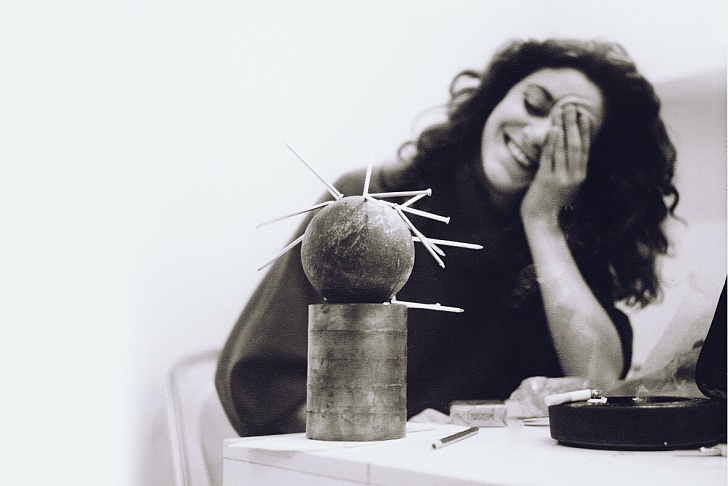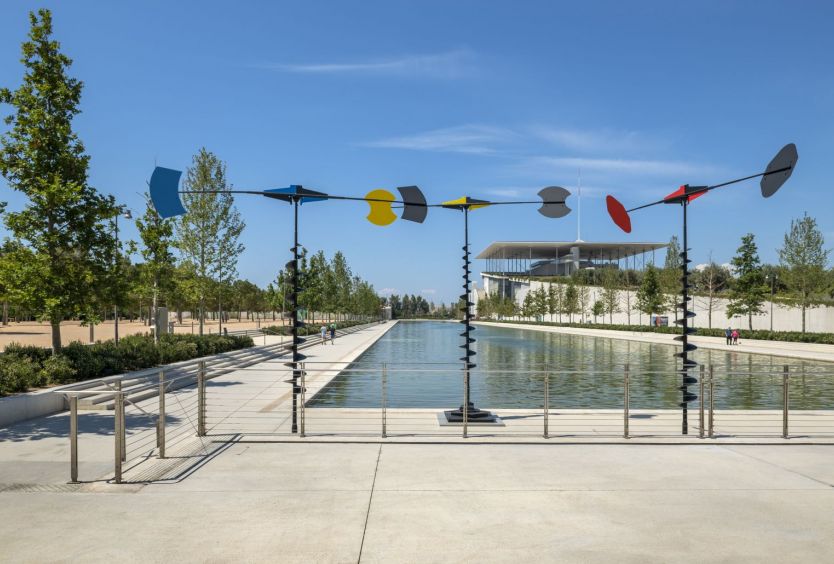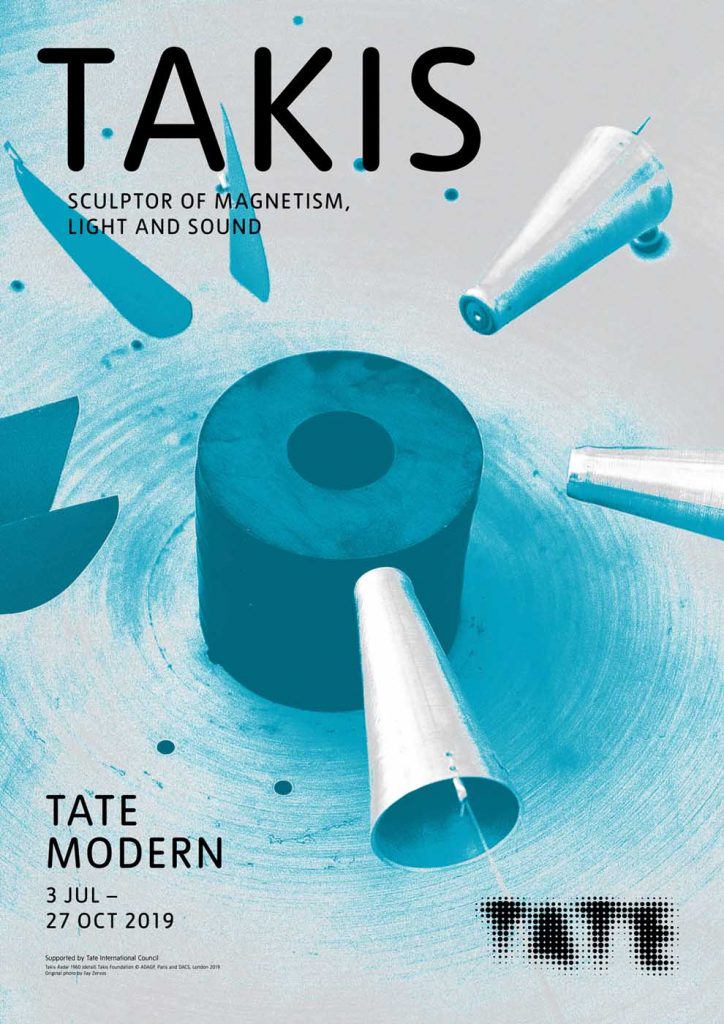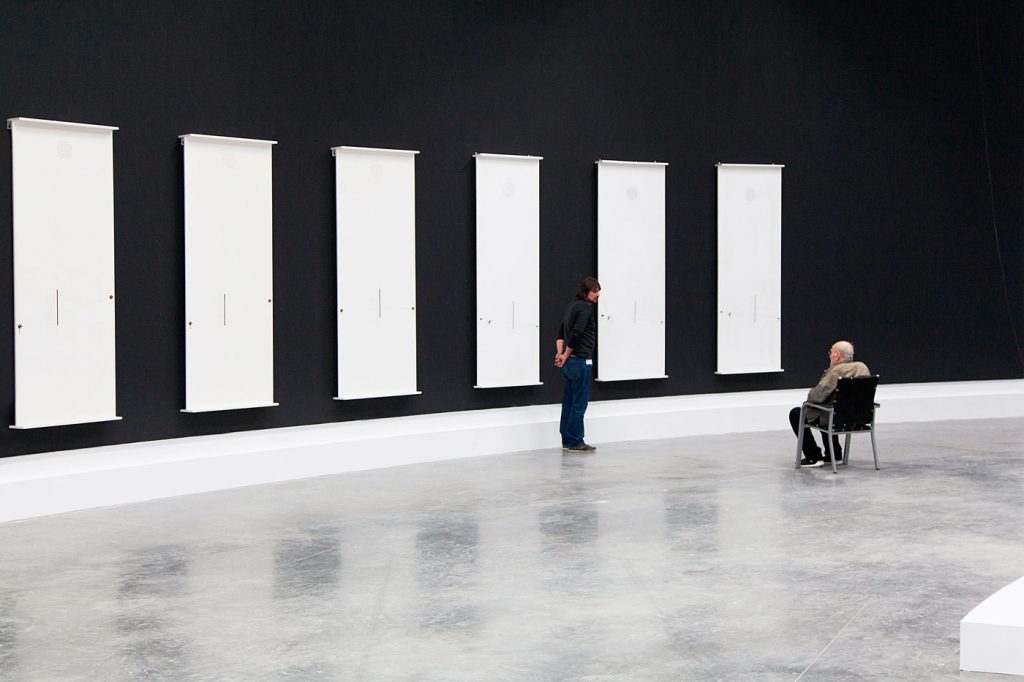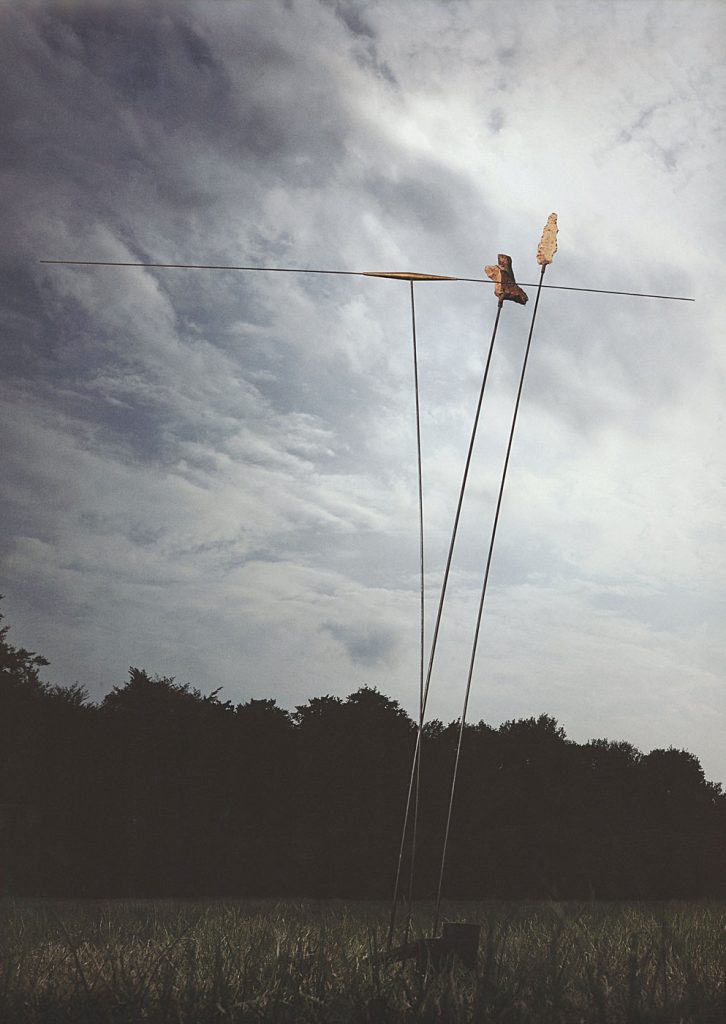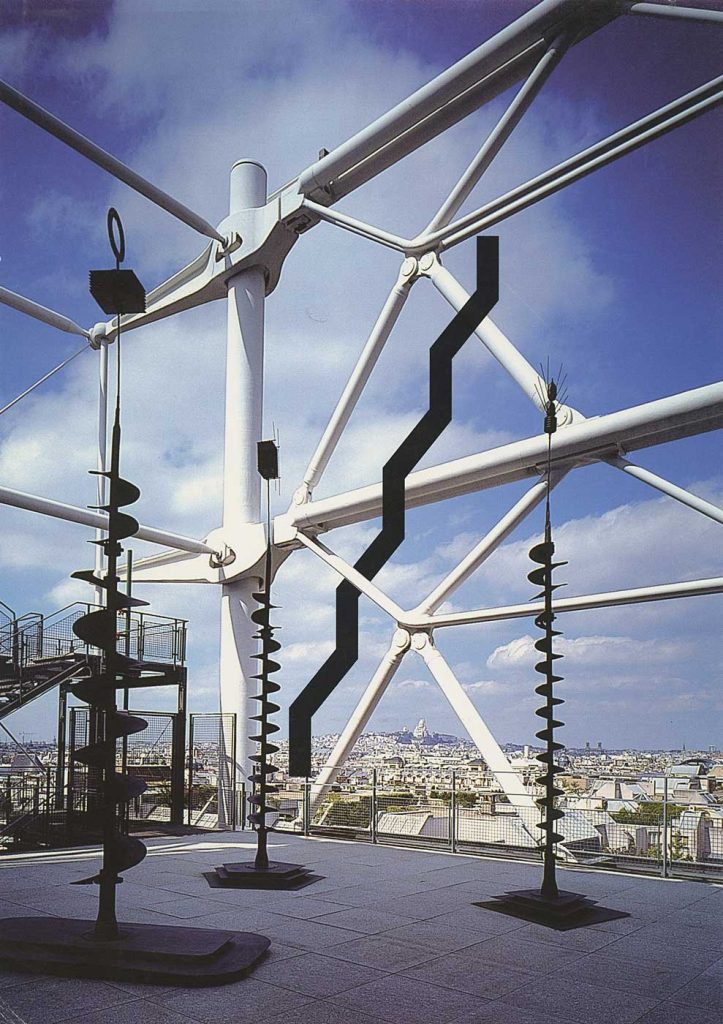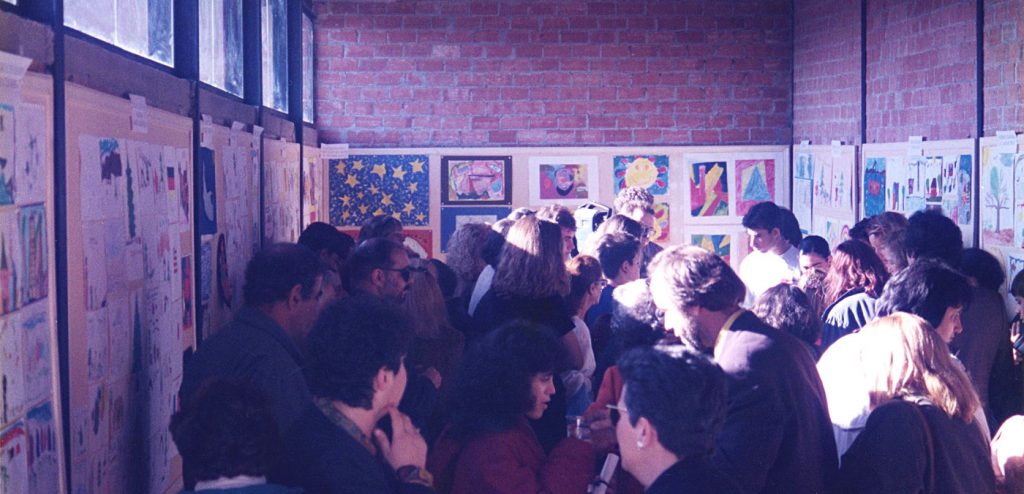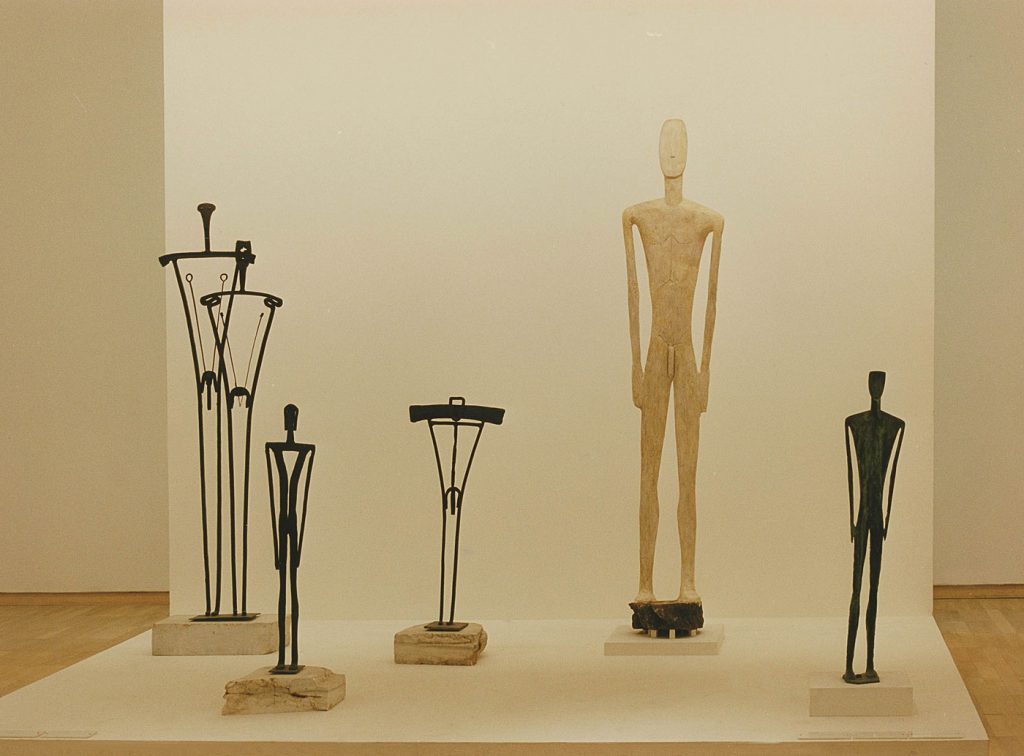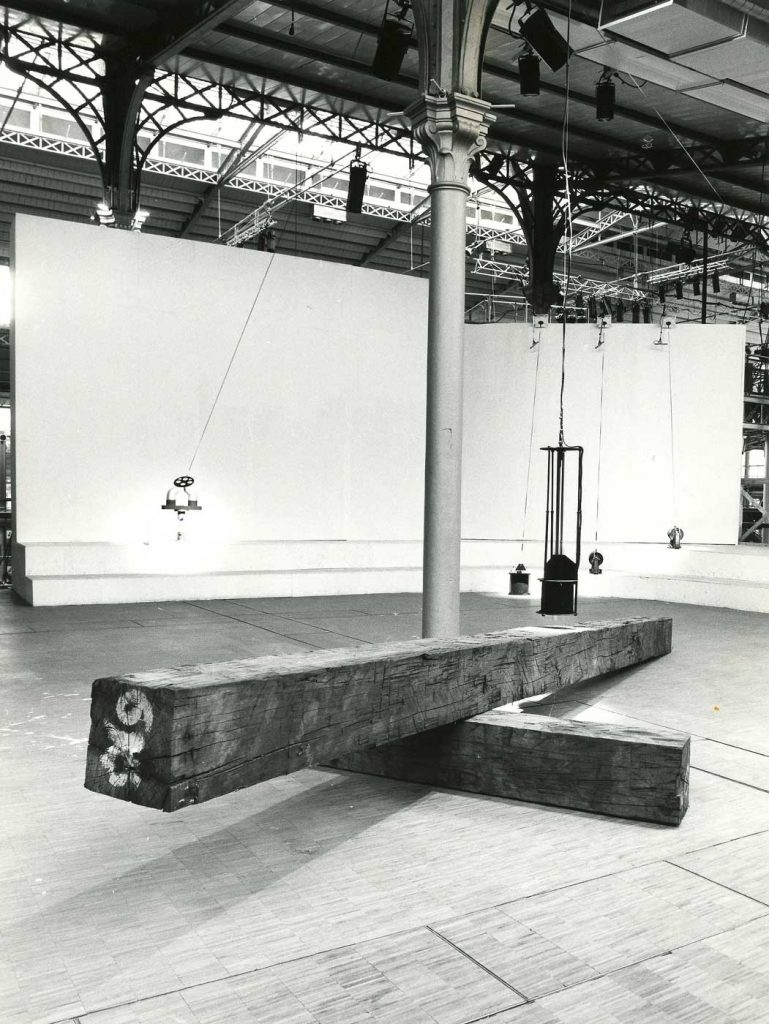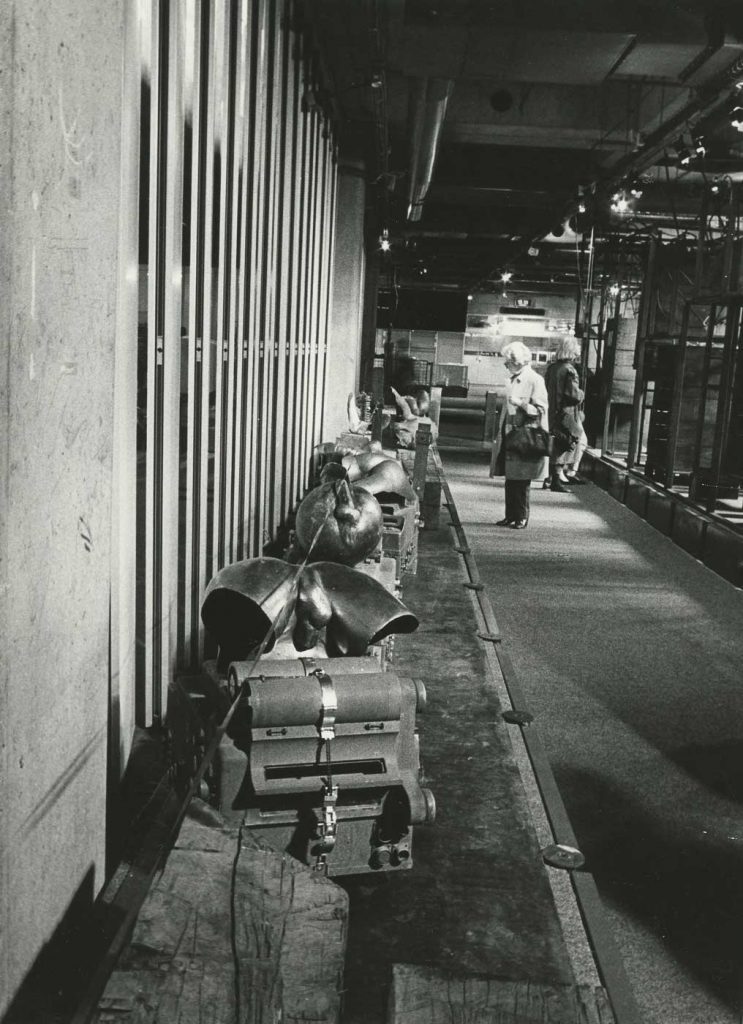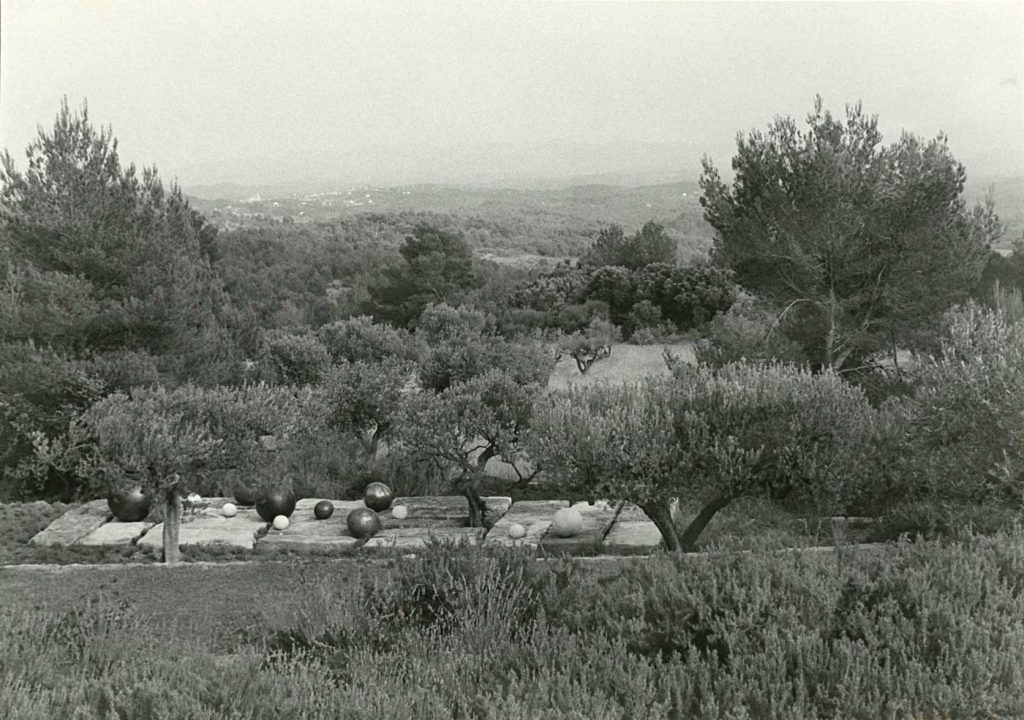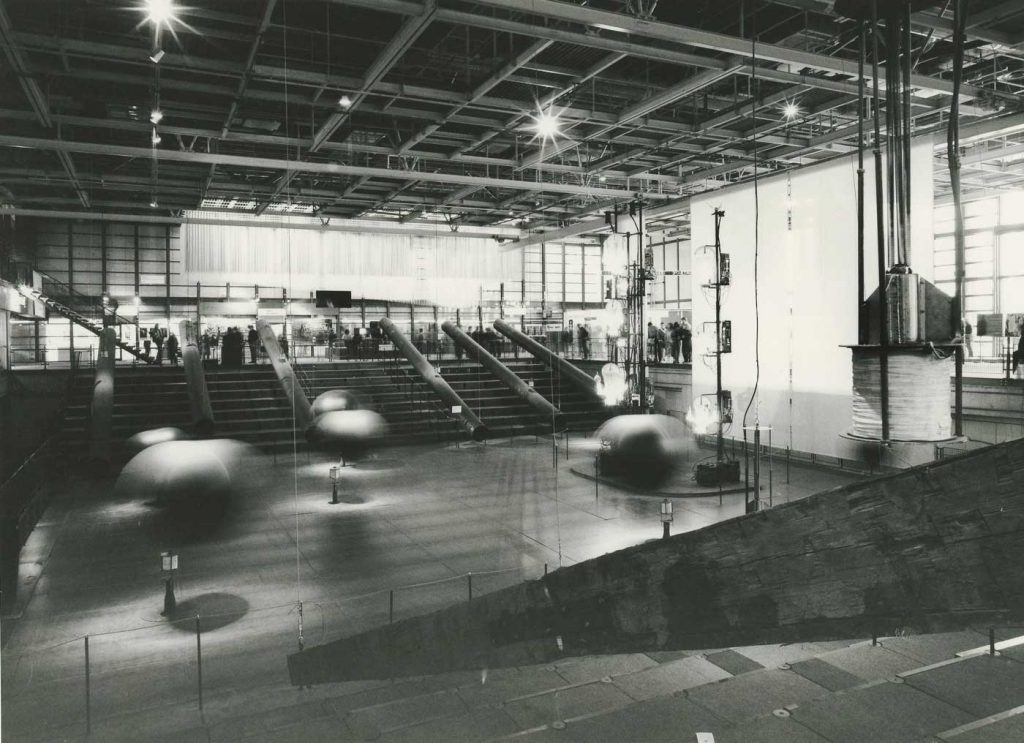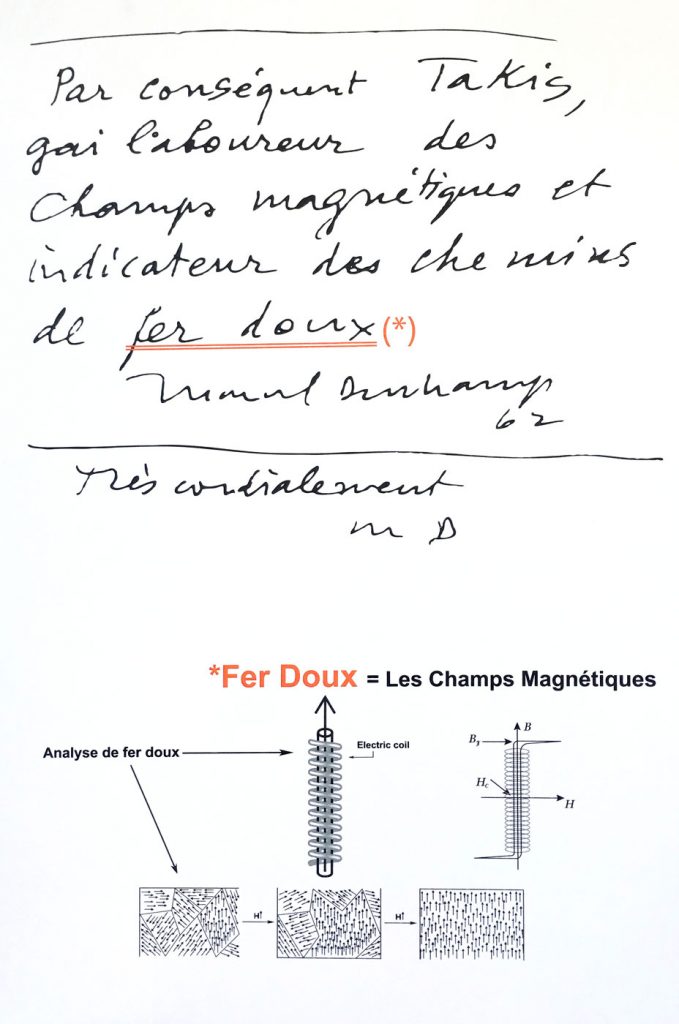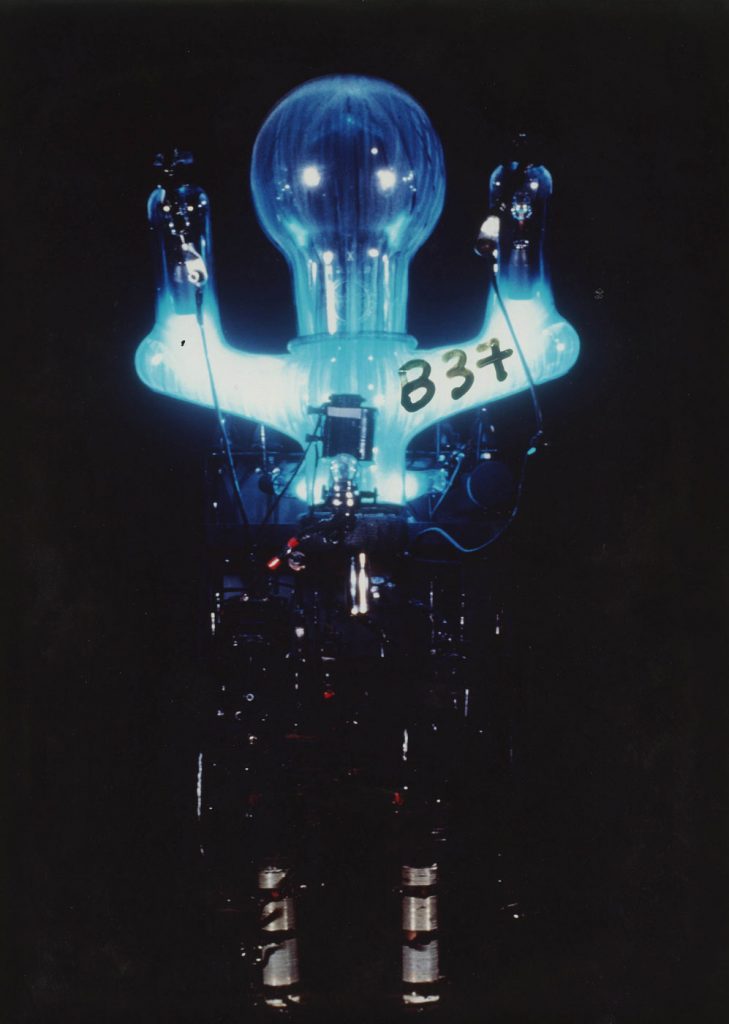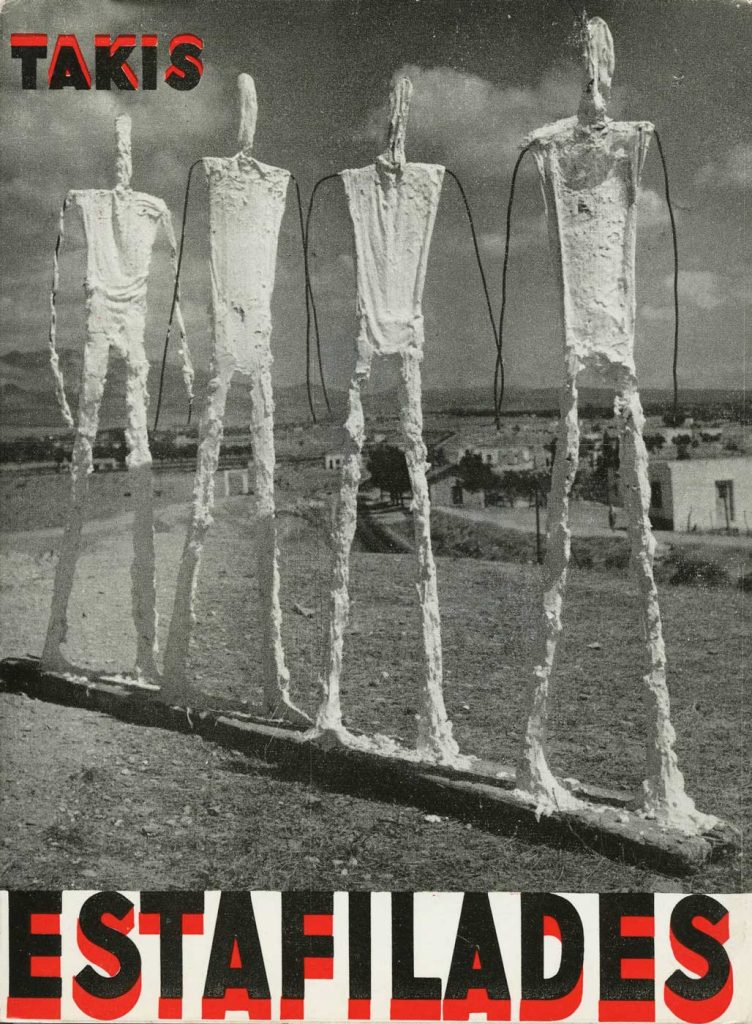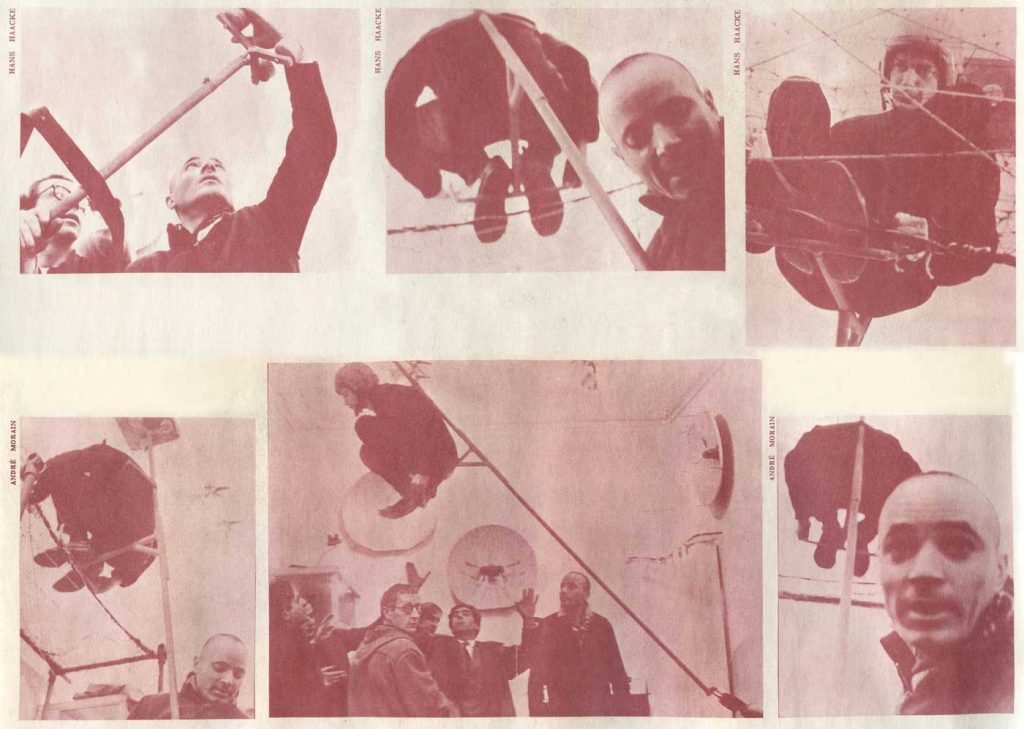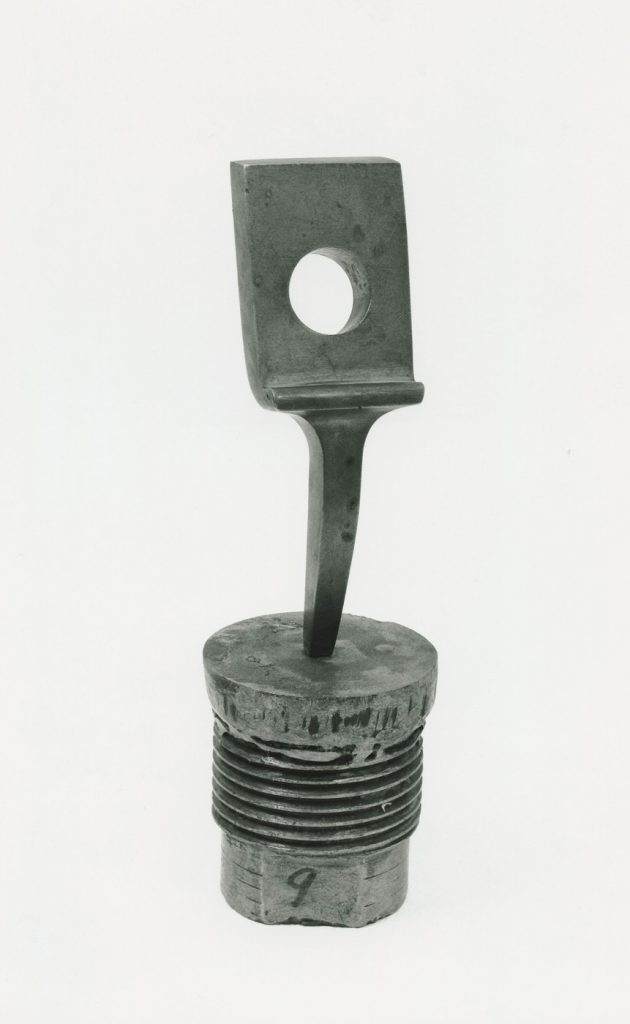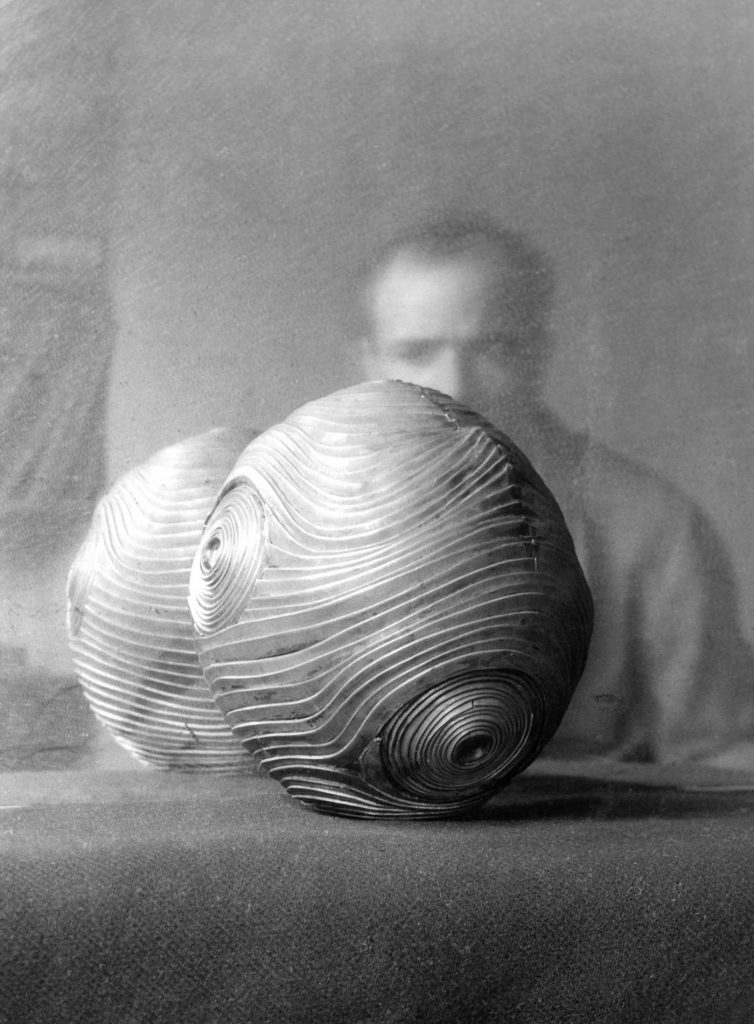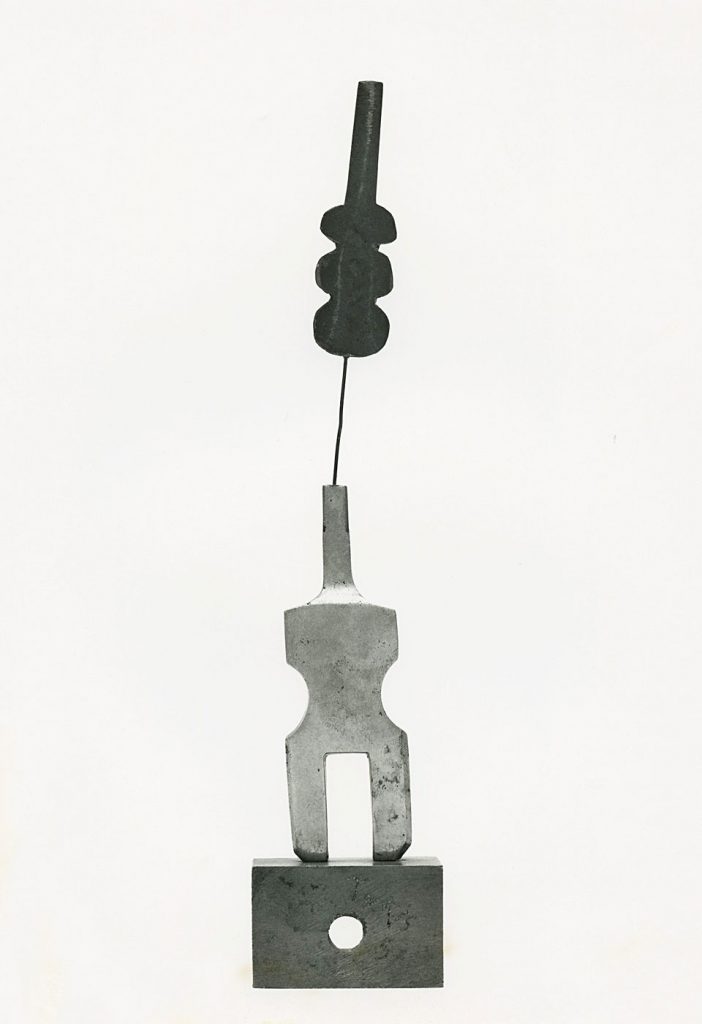Photo credits: SNFCC / Panos Kokkinias, Takis, Aeolians, Painted iron, aluminum, 2000, ©Takis Foundation, ADAGP-Paris, OSDEETE – Athens
November. The Museum of contemporary art of Barcelona, MACBA, organizes the first solo presentation of Takis’ work in Barcelona.
Curated by: Guy Brett (critic and independent curator), Michael Wellen (Curator of International Art, Tate) and Teresa Grandas (Curator, MACBA). Exhibition organized by Tate Modern and MACBA Museu d’Art Contemporani de Barcelona.
March. The Musée des Arts Décoratifs in Paris exhibits Diane Venet’s unique 230 jewerly collection from 150 international contemporary artists, entitled De Calder à Koons, Bijoux d’Artistes. La Collection Idéale de Diane Venet. In the exhibition, two of Takis’ jewels are featured, created with gold and magnets, titanum and stones.

November. He creates The Mirror of My Soul or Hommage à John Lennon.
«I’m sure I’ve told you this many times. How did I meet Yoko? There was a sort of underground clique in London; John Dunbar, who was married to Marianne Faithful, had an art gallery in London called Indica and I’d been going around to galleries a bit on my off days in between records. I’d been to see a Takis exhibition, I don’t know if you know what that means, he does multiple electro-magnetic sculptures, and a few exhibitions in different galleries who showed these sort of unknown artists or underground artists…», says John Lennon in an interview with Jann Wenner for The Rolling Stone magazine in 1971.
April. The Macedonian Museum of Contemporary Art presents pieces from his collection for the first time in Germany. More specifically, his 4.5m Gong (1978) is showcased in the Fridericianium exhibit during the Documenta XIV.
April. The Patinoire Royale, in cooperation with Galerie Downtown in Paris, host a retrospective exposition dedicated both to Takis and Jean Prouvé, who is also a self-taught architect and designer, entitled Prouvé-Takis.
September. The Xippas Gallery in Geneva has an exhibition entitled Magnetic Fields and the Fourth Dimention.

February. The Palais de Tokyo, in collaboration with Alfred Pacquement, has a retrospective entitled Takis. Champs Magnetiques (Takis – Magnetic Fields). Around fifty remarkable pieces from throughout his entire career are presented. This is one of the most complete individual exhibits paying tribute to Takis’ work, since the last one in Jeu de Paume, 1993.
November. The MIT organizes the 5000 Moving Parts exhibition (which will run up until 2015), featuring Takis’ electromagnetic sculpture, which is also on MIT’s permanent collection, Electro-Magnetic I (1968), but also works by other important artists such as Anne Lilly, John Douglas Powers, Rafael Lozano-Hemmer, and Arthur Ganson. The purpose of this exhibition is to examine the wide range of kinetic art from the 1960s up to today, through works inextricably affiliated with motion and unpredictability, with inspirational sculptures that promote contemporary political issues, incorporating ancient myths into modern life.
July. Takis’ Aeolian Signals are placed in the garden of the Palais Royal. At the opening of the exhibition, French Minister of Culture and Communication, Frédéric Mitterrand, praises the artist’s sculpting in his speech.
November. Takis donates 100 unique magnetic art works and 20 multiples to the Médecins Sans Frontières. In collaboration with K.E.T.E., the Xippas Gallery and the Rotary Club of Athens, they organize an exposition at the Xippas Gallery, entitled Magnetic Walls 2009. The artist has the dual purpose of both supporting the Médecins Sans Frontières, and paying tribute to his mother Alexandra, who contributed as a volunteer paramedic during the Hellenic-Albanian War, also being honored by Queen Frederica.
Four years after placing Takis’ Aeolian Signals in Dionysiou Areopagitou Street (one of the most central pedestrian streets in Athens), municipal authorities decide arbitrarily and without explanation, to announce their removal.
November. The Stavros Mihalarias Art Center hosts the exhibition Solar Magnetic Fields.
April. The Maeght Foundation in Saint-Paul-de-Vence, Southern France, hosts an exhibition entitled Takis – Oeuvres Récentes, dedicated to his most recent creations.
May. The Takis Foundation-Research Center for the Art and Sciences, in collaboration with the Rotary Club of West Attica, hosts the exhibition Planet Reflections at the Intercontinental Hotel in Athens. Part of the proceeds is to be allocated to support the Group’s humanitarian activities, such as the polio vaccine to eradicate the disease.
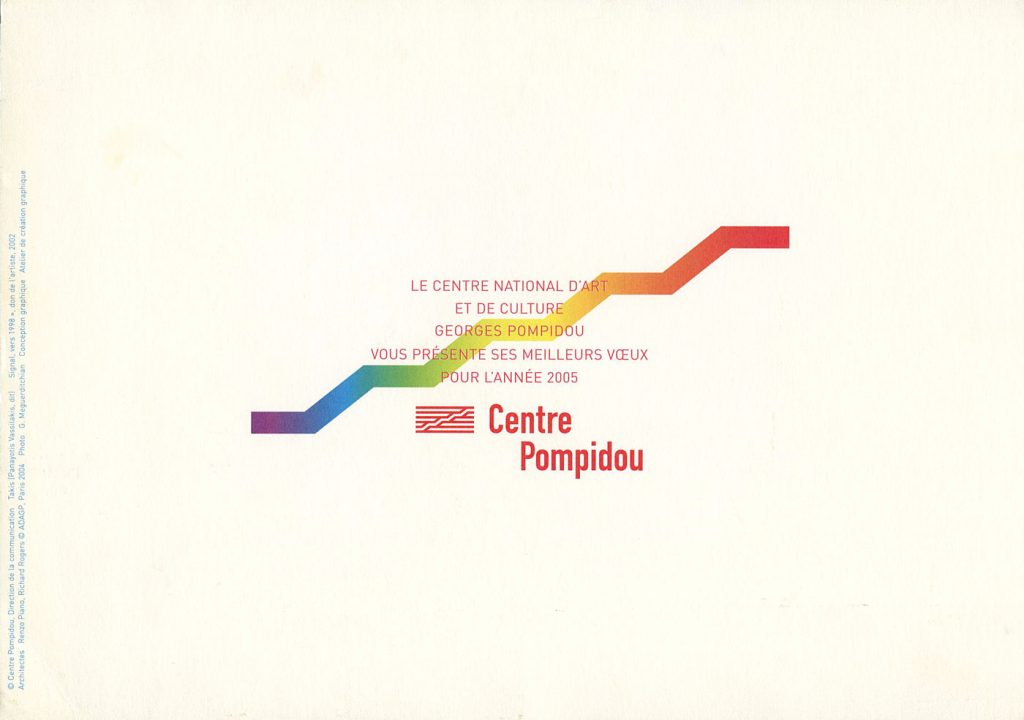
The Centre d’Art Contemporain Georges Pompidou depicts in their Christmas card the three Signaux – Vis d’Archimède, which four years earlier were placed on the fifth floor terrace.
December. Takis donates three Aeolian Signals to the Benaki Museum on Piraeus Street, which are placed on the building’s façade.
January. Takis’ Musical Spheres are displayed in Atomium, Brussels, for the exhibition En Équilibre et en Movement.
Later that month, the Center of Contemporary Art in Larissa organizes the exhibition Music of the Spheres: Musical Space 1, where Takis’ 12 musical pieces are presented, 7 Spheres and 5 Strings.
The Galleria Gruppo in Milan as well as the Galleria Credito Siciliano in Sicily exhibit Takis’ Magnetic Walls, Aeolian Signals, Antigravity Spheres and Musical Spheres.
The Olympic Games in Athens inspires Takis to exhibit his Olympic Spirals and Aeolian Signals in the National Glyptotheque as well as in the exhibition Athens by Art, organized by the Athenian municipality.
Takis’ poster is inspired by the Athens 2004 Games, and commissioned by the Musée d’Art Contemporain du Val-de-Marne.
He confiscates four of his Musicals exhibited in Athens by Bonham’s auction house, which he himself had donated to Iolas Foundation. He manages to interfere with the sale of these sculptures in London at an auction.
He offers a Musical Sphere to the company constructing the New Greek National Opera “Maria Callas”. Meanwhile, he participates in the exhibition Music Mirrors – History Conscience.
July. Takis co-signs the Olympic Truce Partnership, joining forces with the former South African President, and Nobel Peace Prize winner, Nelson Mandela, at an event held at the Athens Concert Hall. The truce is also signed by director Theo Angelopoulos, Helene Glykatzi-Ahrweiler, Mikis Theodorakis, violinist Leonidas Kavakos, composer Eleni Karaindrou, artist Jannis Kounellis, composer Thanos Mikroutsikos, singer Nana Mouskouri, director Jules Dassin, the sculptor Takis and stage designer Dionysis Fotopoulos.
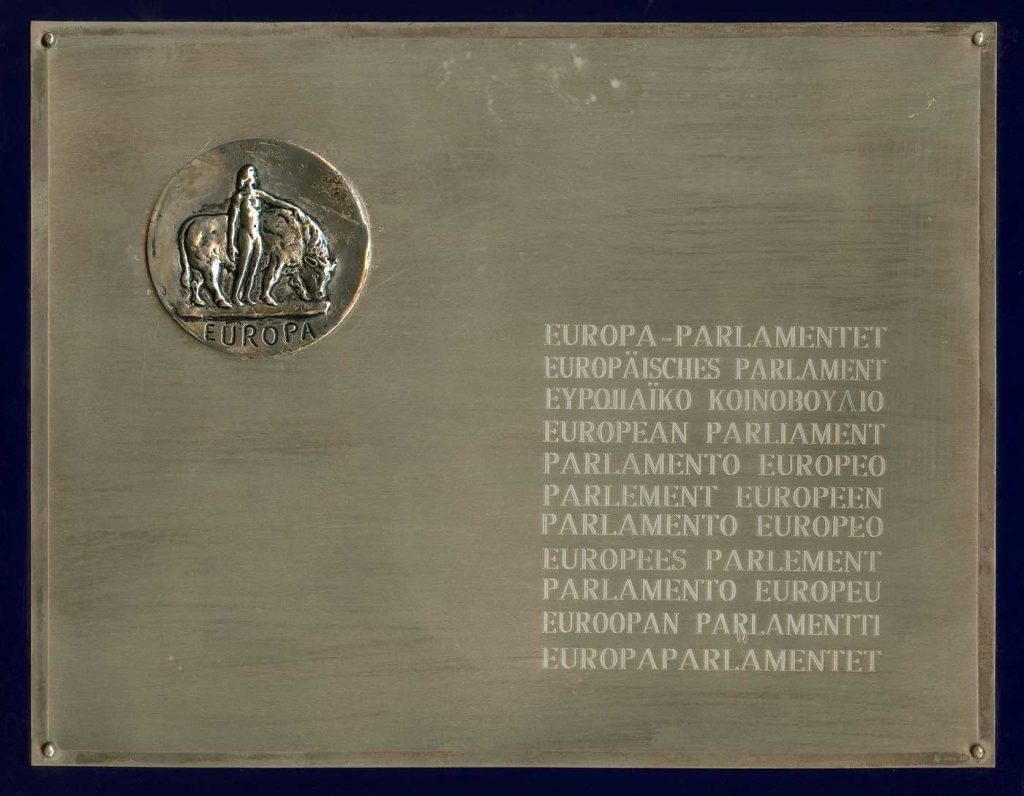
The European Parliament awards the TAKIS-KETE Foundation an Honorary Plaque for the artists’ innovative artwork Electric Barrels, as well as for his contribution to the field of renewable energy sources.
Takis donates three Signaux – Vis d’Archimède for the permanent collection of Centre Pompidou in Paris. The pieces are placed in the terrace of the building on the fifth floor.
April. The Barcelona Museum of Contemporary Art, and London’s Hayward Gallery, organize the exhibition entitled Campos de fuerzas. Un ensayo sobre lo cinético – Force Fields: Phases of the Kinetic, in which 23 of Takis’ pieces are showcased among other internationally top-tier artists, such as Marcel Duchamp, Alexander Calder and Julio Le Parc. The exhibit is moved from Barcelona to London three months later in July. Curator of the exhibit is renowned American art critic, and Takis’ friend, Guy Brett.
June. Takis unveils his solar energy sculpture in Delphi, which he names Tribute to Apollo, as part of the exhibition Leading Artists of the 20th Century – Takis-Chryssa organized by the European Cultural Center of Delphi. It’s a huge kinetic sculpture based on photovoltaic energy, transforming sunlight to electricity. This particular piece is the largest sculpture set in a public area in Greece.
He creates the Illuminated Relief, commissioned by the «Attiko Metro» for the Syngrou Fix metro station. For the first time, Takis creates a project that is a set of Luminous Signals placed on a panel.
Takis is elected to represent Greece at the XLVI Biennale in Venice, where he declares: “I am a citizen of the world” and decides to exhibit his pieces in the open space in front of the Greek booth, thus trying to symbolically abolish the borders in art.
July (12/07). The President of the Hellenic Republic, Konstantinos Stephanopoulos, bestows the “Taxiarchis” (Commander) grade of the Order of the Phoenix on Takis.
November. The Mihalarias Art Gallery in Kolonaki hosts the exhibition entitled Erotica. This is the first time the core theme of an exhibition in Grecce is Takis’ Erotic works.
May. The La Caixa Foundation in Madrid presents on its premises Takis’ retrospective exhibition organized by Jeu de Paume a year earlier.
December. Athens School of Fine Arts presents Takis’ retrospective exhibition organized by Jeu de Paume.
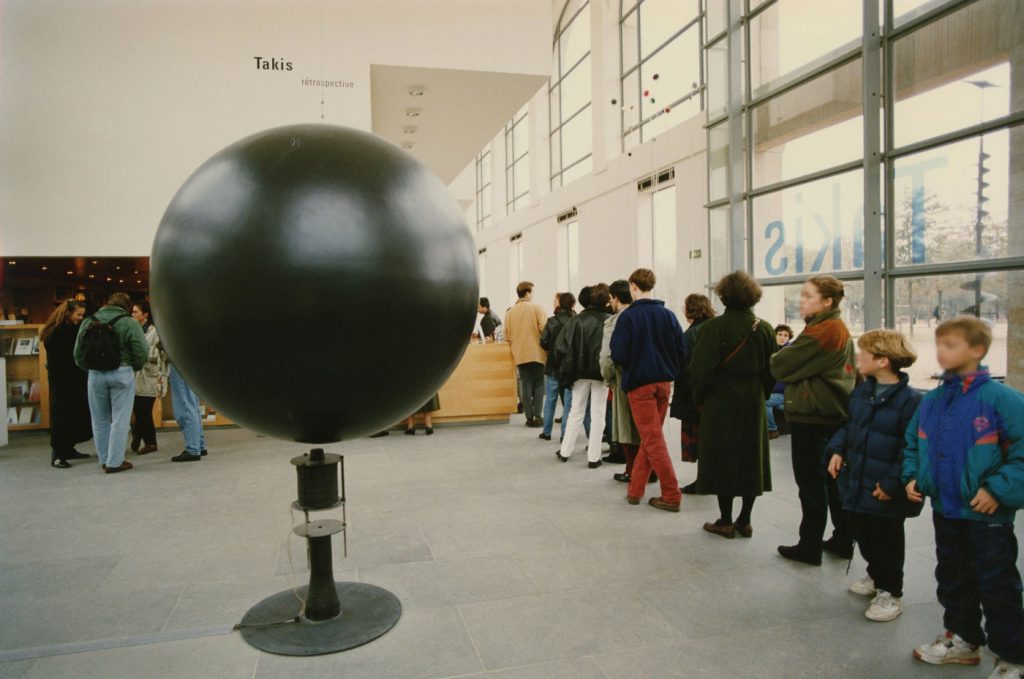
July. The Galerie Nationale du Jeu de Paume hosts a retrospective exposition of Takis. So far, this is the largest and most important exposition dedicated to the artist, in which he presents all his series of works from the beginning of his artistic career.
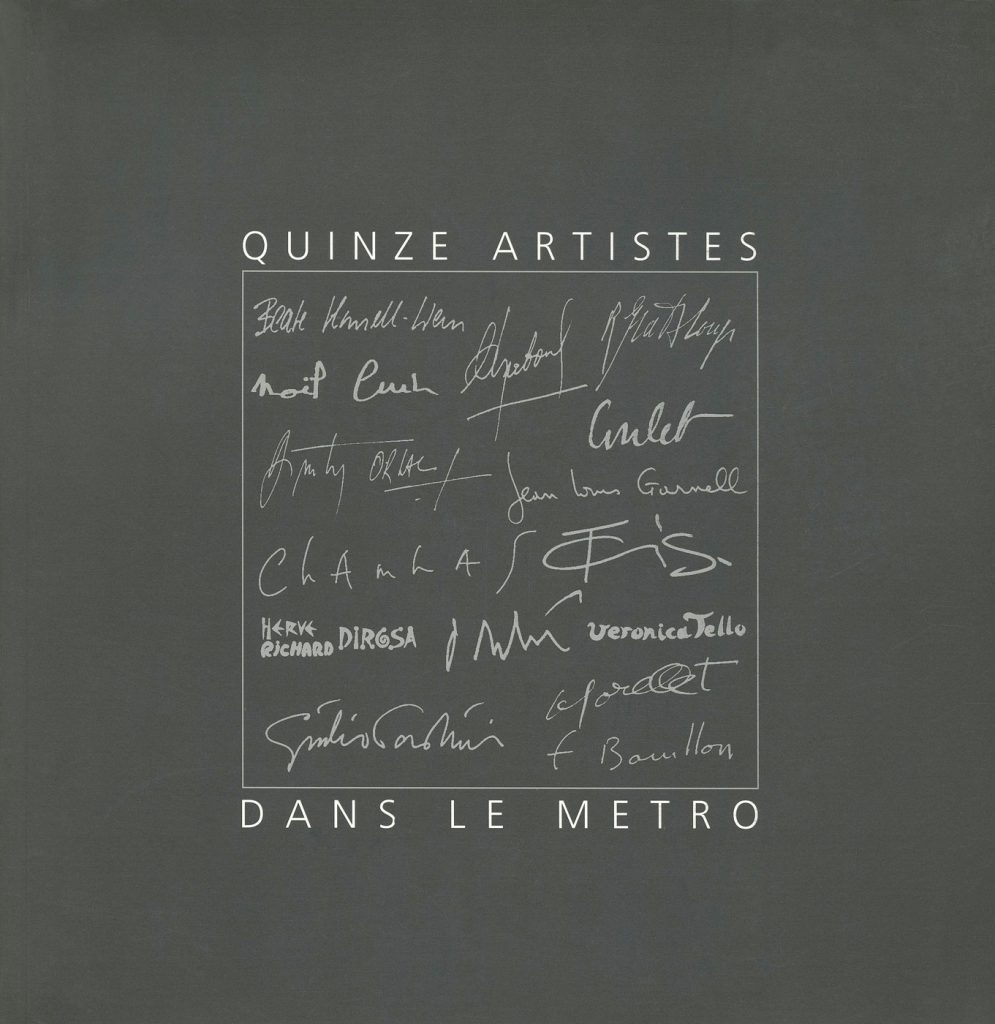
June. Line A of the Toulouse metro in France opens, with its 15 stations decorated by 15 contemporary artists’ works. These works of art are not randomly chosen, a national contest with 600 candidates lead to their selection. On account of this, poet Serge Pey also wrote a total of 15 poems entitled 15 Stations. Takis decorates the Reynerie metro station with his sculptures Spirales – Les Vis d’Archimède.
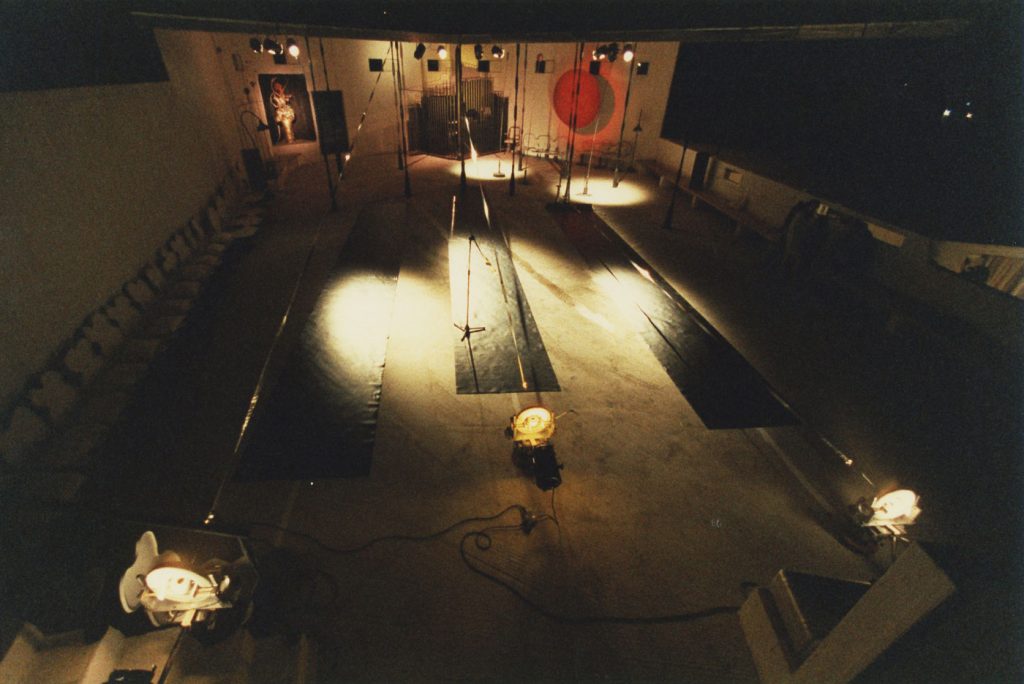
November (07/11). He organizes the opening ceremony – inauguration of the «Research Center for the Art and Sciences», where a group exhibition of young Greek artists is presented.
The FAE Museum of Contemporary Art in Pully, Switzerland, presents the Jeu de Paume retrospective. This is the artist’s most important exhibition in Switzerland.

He transforms the Château d’Eau in Beauvais into a Musical Illuminated Sculpture of approximately 60m height and 30m in diameter, which also serves as a symbol of the towns actions and efforts for societal development.
December. The Musée des Beaux-Arts de Nîmes in the South of France holds an individual exhibition for Takis, entitled Musique et Espace.
The Artcurial auction house takes on creating multiples (Edition Artcurial) of Taki’s Erotic sculpture Magnetic Evidence (1983).
Takis places 10 additional Signaux Lumineux at the Grande Arche de la Défense.
He performs the Isis Awakening wtih Barbara Maurothalasiti.
He creates the Hommage à Venus, otherwise known as L’oeuf or Le Bing Bang, approximately 2.5m tall.
He wins the Grand Prix National de Sculpture in Paris.
On the occasion of the Olympic Games, he creates a Signal which is placed in Seoul’s Olympic Sculpture Park.
April. During the Takis – Electra ‘88 exposition in Stavros Mihalarias Art Center, some of Takis’ Erotic sculptures are presented for the first time. Meanwhile, the performance Ιocaste is staged, which Takis directs, and for which he also composes the music, and creates the sets and scenery.
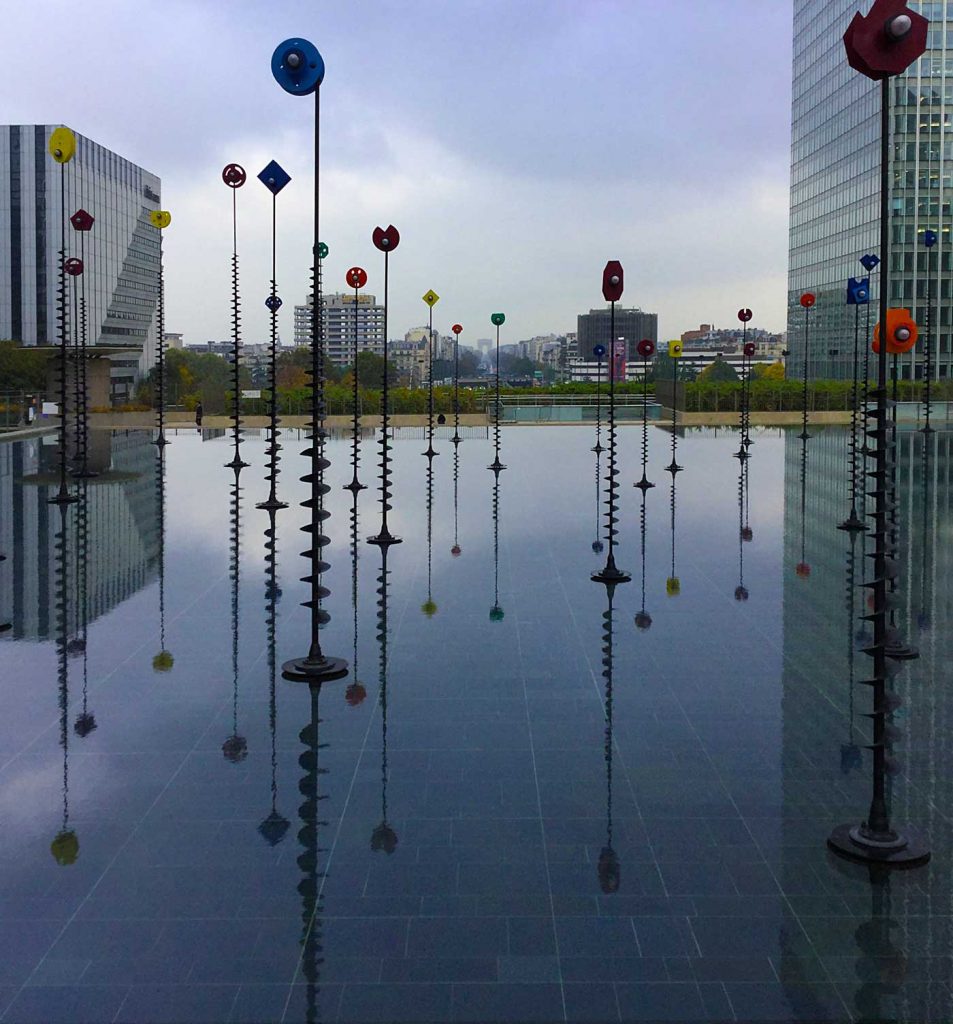
The French Defence Public Authority grant Takis the use of the largest public space that has been ever given to any artist in the history of Paris. He creates the Foret Lumineuse (Luminous Forest), which consists of 39 Signaux Lumineux-Vis d’Archimède (Luminous Signals-Archimedes Screw), at a height of 3,5m up to 9.5m, which he showcases in the the Espalande de La Défense.
November. The «Research Center for the Art and the Sciences» (K.E.T.E) is founded, with the purpose to encourage artistic and scientific activities as well as professions.
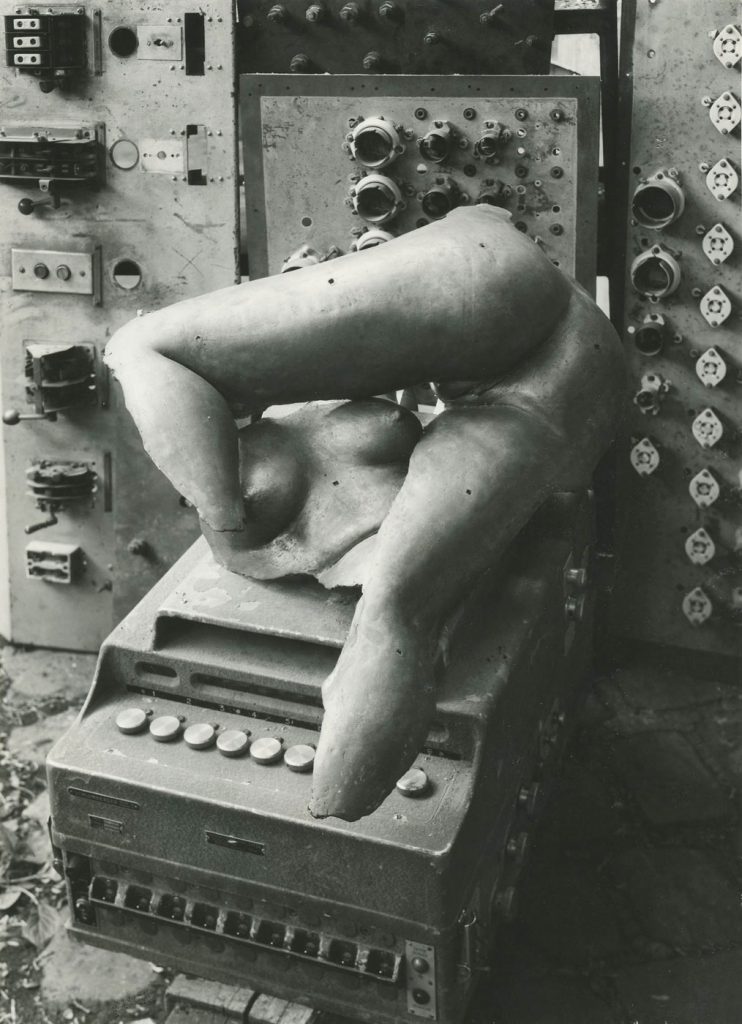
June. The Centre Pompidou and the Fondation Transculturelle Internationale co-host the exhibition Le Siècle de Kafka (The Century of Kafka) in which artists like Paul Klee, Victor Brauner, Max Ernst and Alberto Giacometti participate as well. Takis creates the installation Le Siècle de Kafka specifically for this exhibition. The installation mainly consists of Sculptures Érotiques, Lignes Parallèles (Parallel Lines) and TéléLumières.
French publishing house Galilée issues the artist’s Monograph entitled Takis-Monographies, which also includes texts by Nicolas and Helena Calas, Pierre Restany and William Burroughs.
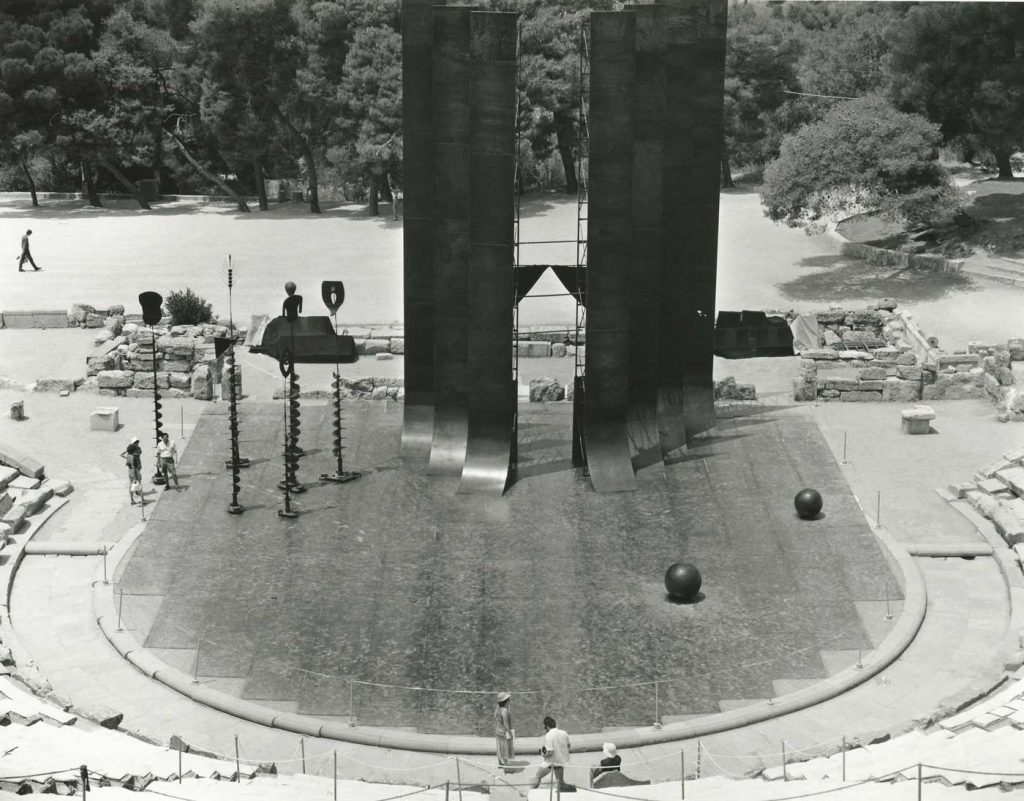
June. He creates the stage design and the music for the tragedy Electra by Sophocles at the Ancient Theatre of Epidaurus, directed by Michael Cacoyannis and staring Irene Papas. Takis creates 7 Signaux, 2 Espaces Intérieurs and a Metallic Construction as Agamemnon’s palace. Later that year, the Musée d’Art Moderne in Paris hosts Takis’ solo exhibition entitled Electra.
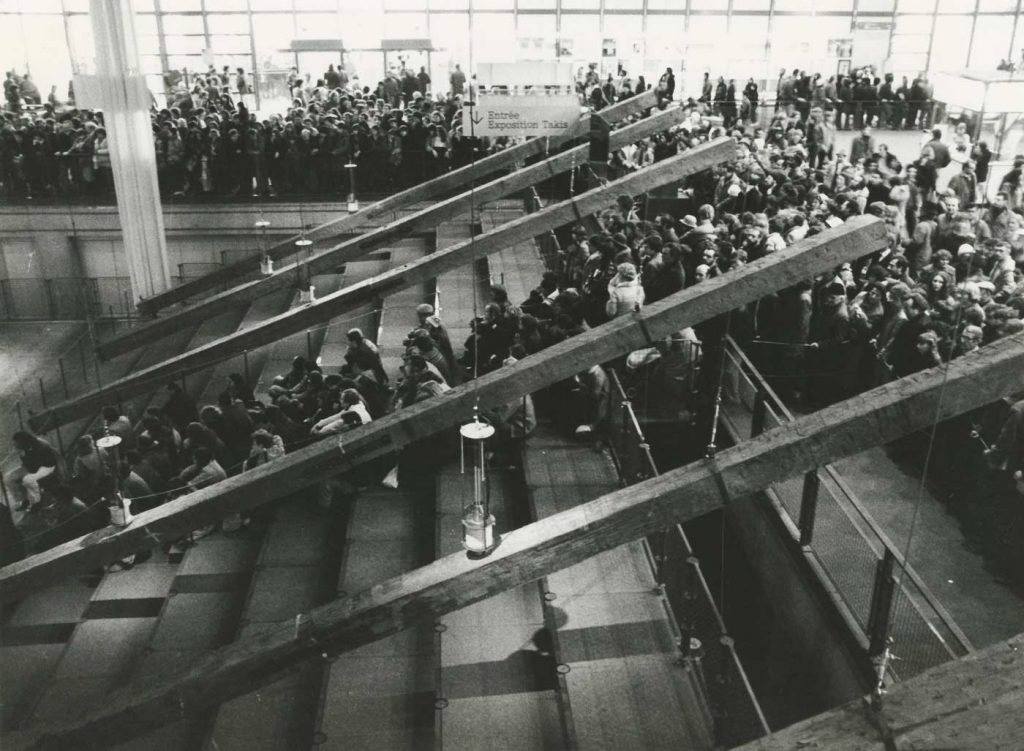
November. The Centre Georges-Pompidou hosts an exhibition at the Forum based on Takis’ 3 Totems- Espace Musical, with the same title. It is one of the most monumental works of the artist, in which numerous elements of his artistic path combine, like sounds and music, the Télélumières, magnetism and the wooden hammers.

Of this environment of musical and luminous sculptures presented, Takis declares: «If these objects did not exist, I would do something else. I did not conceive a form beforehand, I simply assembled the elements with a logic probably sculptural but also technical. Of course the objects are imposing, the electric aspect a little terrifying and also nostalgic. What fascinates me is to highlight something invisible with this electron trap, which is basically the télélumière”.
June. The Museé Nationale d’Art Moderne de la Ville de Paris hosts the exhibition Ecouter par les Yeux (Listen through the Eyes).

June. Takis and Nam June Paik present the concert entitled: Duett Paik/Takis at Kölnischer Kunstverein in Cologne, during the Takis Klangraum Gestaltung (Takis, Design of Musical Space)
Later that month, the Museum of Fine Arts in Calais, France, hosts an exhibition entitled TAKIS.
He performs Espace Musical – La Ligne Érotique with Charlemagne Palestine at the Musée Rath in Geneva.
December. Sheila Fell passes away.
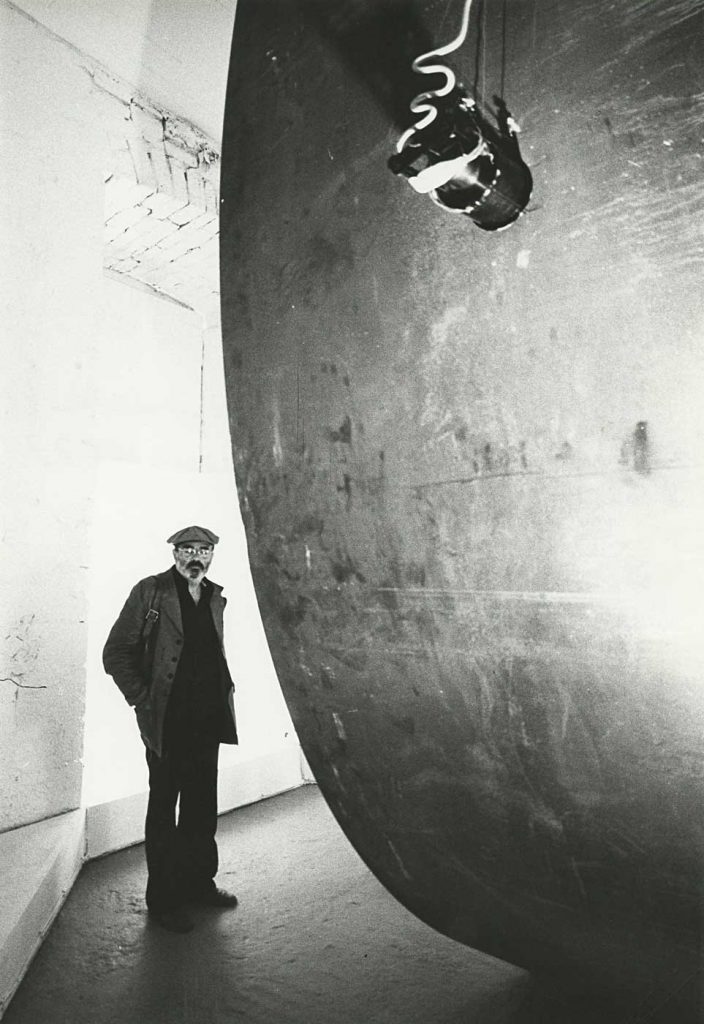
June. Takis participates in Documenta VI in Germany’s Kassel, presenting his work Espace Musical during the Malerei Plastic Performance exhibition.
April. At the Odéon theater in Paris, Euripide’s tragedy The Bacchantes is played, directed by Michael Cacoyannis, in which Takis was the music director.
His Erotic Sculptures are displayed for the first time in the Alexandre Iolas Gallery in Paris.
June. The Iolas-Zoumboulakis Gallery participates in the International Art Fair in Basel, showcasing twenty of Takis’ Signals.
April. French film Section Spéciale (Special Section), directed by Costa Gavras, opens in the theaters. Takis composes the (magnetic) music. Later that year, the film is presented with the Best Director Award at the Cannes Film Festival, and was also nominated for the Golden Globe Award for Best Foreign Language Film.
November. London’s Institute of Contemporary Arts hosts an exhibition dedicated only to top-tier artists born in Greece from 1925 to 1935, such as Takis, Chryssa, Pavlos, Jannis Kounellis etc. The exhibition is titled Eight Artists, Eight Attitudes, Eight Greeks and it displays artwork by Takis from 1955 to 1970.
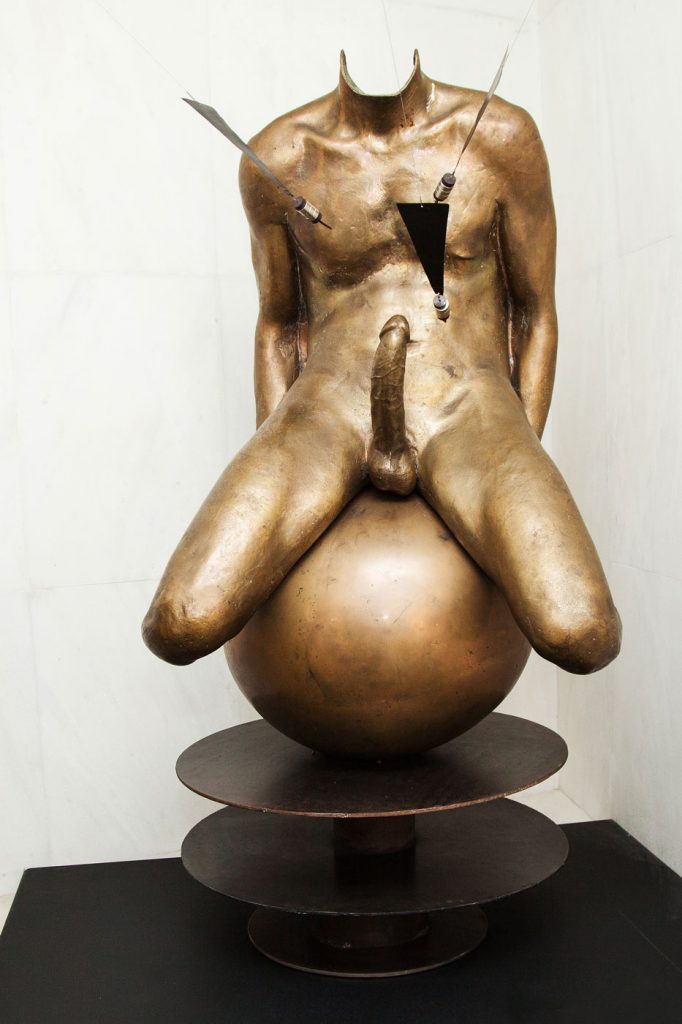
For Takis, the power of attraction is the common denominator of magnetism and eroticism. Inspired by this thought, he creates his first Sculptures Érotiques. The landmark piece of the series, Sebastian, a sculpture of molded bronze. The trunk contains hidden magnets which attract gold plated needles that symbolize arrows. A particular trait of this piece, is the sculpture’s erection.
He composes music and designs the set for the play Elkesis, in collaboration with choreographer Jaap Flier, founding member of the Nederlands Dans Theater. The play is featured at the Holland National Festival Ballet.
September. On the occasion of his retrospective exhibition hosted by the Centre National d’Art Contemporain (CNAC) in Paris, Takis presents his Hydromagnetic Sculpture, the Défi à la Gravité, which was inspired during his research at MIT, as well as Festin Magnétique.
May. Grand Palais in Paris hosts the 72 exhibition, during which three of the museum’s floors are adorned with 300 works of art by 72 contemporary artists, one of which is Takis’. This watershed exhibition presents masterpieces by artists like Yves Klein, Jean Tinguely, Arman, Christo etc, during the period of 1960-1972.
October. The Städtisches Museum in Leverkusen hosts an individual exhibition of the artist, entitled Takis.
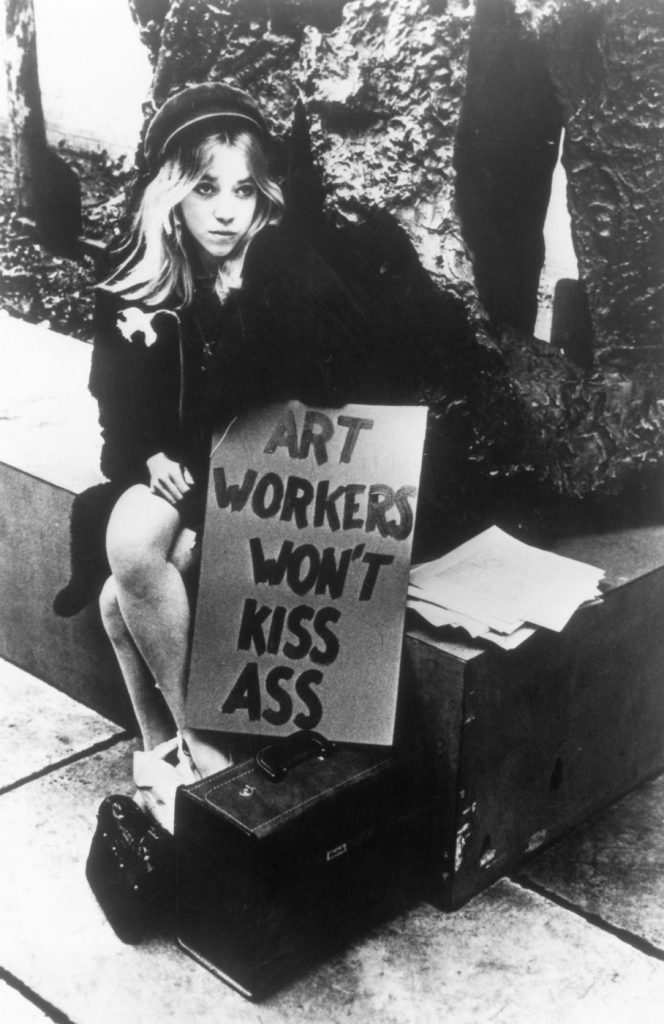
Takis, along with other artists as well as art critics like Nicolas Calas, establish the “Art Workers Coalition” group to defend artists’ rights.

January. During an exhibition titled The Machine as Seen at the End of the Mechanical Age at MOMA New York, Takis storms into the Museum and removes one of his Télésculptures, which he claims is being exhibited without his permission. The artist considers this action to be a symbolic one, as it will be the trigger for a more profound communication between museum managers, artists and the public. The incident makes the front page of the New York Times.

He gains a scholarship to MIT’s Center for Advanced Visual Studies where he settles as a visiting researcher. His research on Liquid suspended due to electromagnetic forces inspires him to create the Sculptures Hydromagnétiques.
He implements his second concept, Sea Oscillation, inspired by Marcel Duchamp’s Bicycle Wheel. Sea Oscillation refers to how the oscillation of the sea is used to produce electricity.
October. He creates the work Marcel Duchamp’s Constantly Moving Bicycle Wheel, or Hommage to Marcel Duchamp.
March. American poet Gregory (Nunzio) Corso, inspired by Takis’ Cadran, entitled Purple Subway Light, writes the homonymous poem. This particular poet is inseparably linked to the Beat Generation, a literary movement that commenced mainly in the USA after WW2.
April. The Howard Wise Gallery in New York puts on an exhibition entitled Takis, Magnetic Sculpture.
He participates in the Lumières et Mouvement (Lights and Movement) exhibition hosted by the Musée d’Art Moderne de la Ville de Paris.
November. He showcases the Bright White Signals, whose extremely thin trunk reaches six meters in height, at the Magnetic Sculpture and the White Signals” exhibition in London’s Indica Gallery.
April. Alexandre Iolas Gallery in Paris hosts an exhibition entitled Les Magnetrons de Takis.
December (22/12). The New Scientist magazine, in an article titled The Sounds of Tomorrow, remarks that Takis, Iannis Xenakis and John Cage are the most promising musicians of the century.
He creates his first Sculptures Musicales.
He lives permanently in London, specifically in an atelier at the area of Chelsea.
He meets John Lennon, Yoko Ono and Paul McCartney in London.
October. Alexandre Iolas Gallery in Paris arranges an exhibition for Takis, entitled Dix Ans de Sculpture (Ten Years of Sculpture).
He purchases the land on Gerovouno Hill (Athens, Greece), and constructions begin on the Research Center for the Art and the Sciences (K.E.T.E).
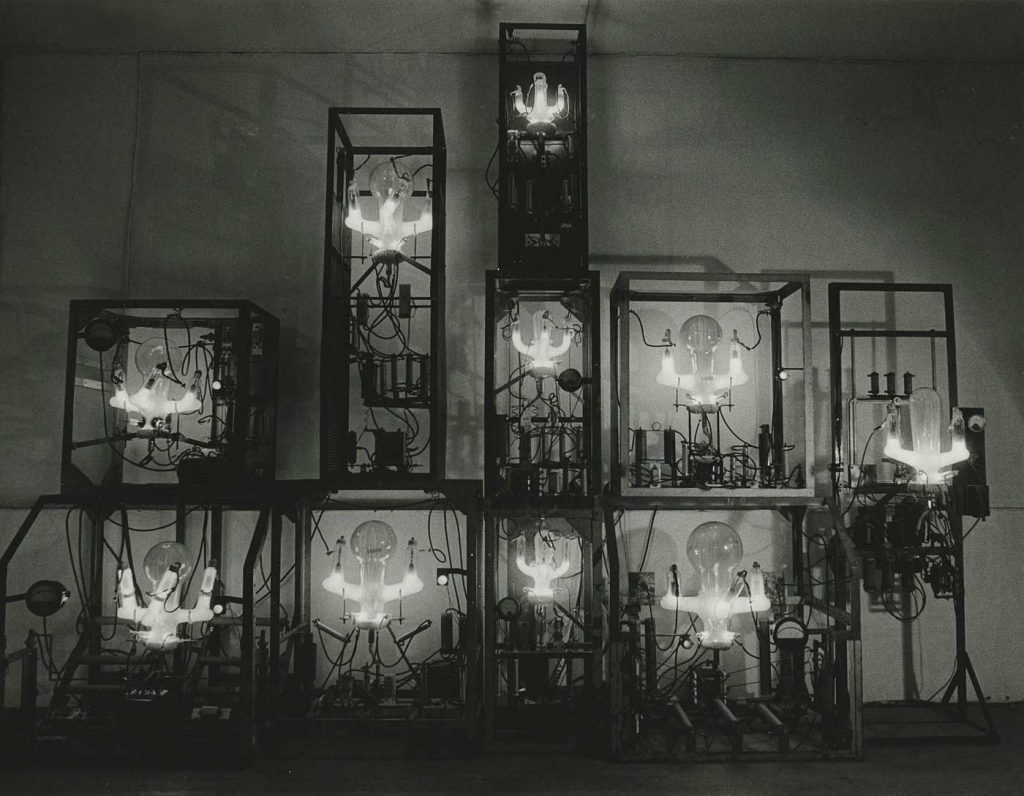
He visits the United States for the first time. There, he meets Greta Garbo and Marcel Duchamp through a Greek writer and poet, Nicolas Calas.
November. Alexander Iolas organizes in his New York gallery an exhibition entitled Sculptures Télémagnétiques (Telemagnetic Sculptures), which is based on a musical poem by Brion Gysin (Iolas will also be Takis’ sole trader and spokesman up until 1976).
He marries Liliane Lijn.
«The first space orbit by the Soviet cosmonaut, Yuri Gagarin not only paralleled her interest in orbiting forms and her involvement with NASA today, but also her preoccupation with the weightless body and her reading of Buddhist texts. As the curator and art historian Dr Sarah Wilson notes so evocatively: Takis took Lijn to Greece – an éblouissment – a dazzling encounter with land, light and sea: with ancient mythologies, with the skin and surface of things versus oracular depth, with passionate love and loss.” Lijn is also known for her drive to ‘re-encounter the archaic Greek as a form of Western primitivism, as a primordial field of culture and representation for contemporary techno-culture. In the mid sixties Lijn and Takis designed and built a circular house at GeroVouno near Athens, combining many aspects of her work, philosophy and life» (Wikipedia).
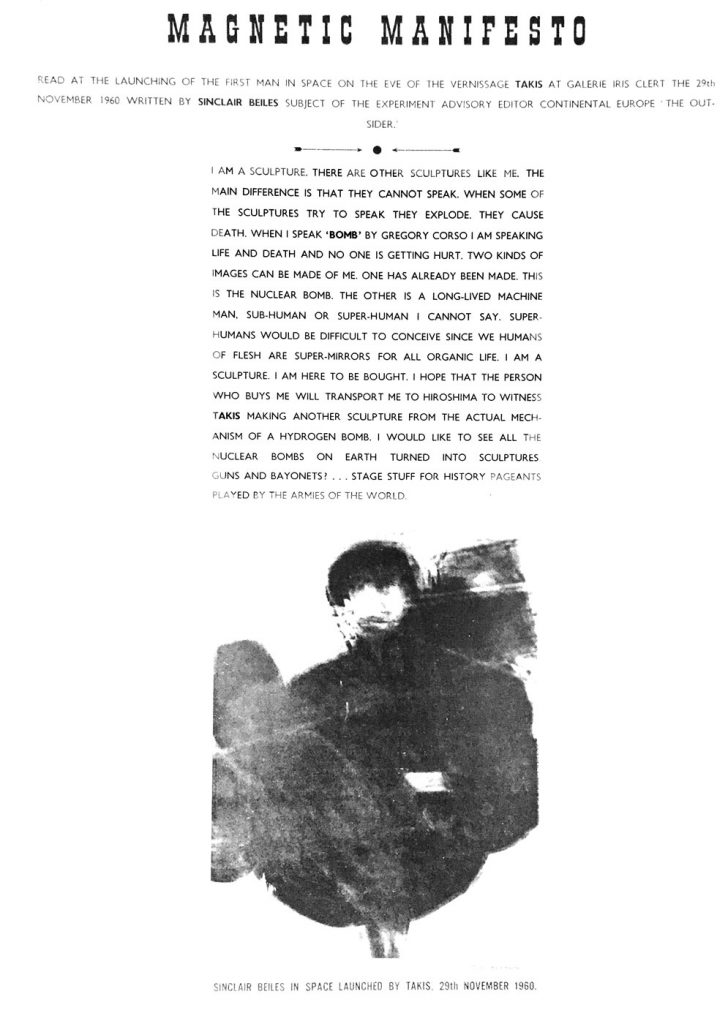
He begins working on his performance “L’Impossible: Un Homme dans l’Espace” (The Impossible: Man in Space) at the Git le Coeur hotel, which is known to be a place artists of the era frequently gather at and reside.
He associates and socializes with writers of the Beat generation, a group of artists who strongly influence both literature and society circles.
November (21/11). The French Ministry of Industry awards him the Brevet d’Invention for his two pieces, Télésculpture (1959) and Télésculpture Électromagnétique (1959).
Birth of his second child, his son Thanos (Athanasios) Vassilakis.
He meets American artist Liliane Lijn in Paris, with whom he will soon be sharing a flat at the Quai Anatole France region.
He becomes acquainted with the South African poet Sinclair Beiles, through whom he is introduced to William Burroughs and Brion Gysin.
He designs costumes for an Alain Arsene theater play, which takes place on the Moon and is performed for his friends.
February. Hanover Gallery hosts an exhibition in London called Takis, in which he showcases his first Signaux, bronze Figures and Idols.
He discovers the magnetic fields and the power of gravity, which will constitute the basis of his oeuvre. Thus, he begins creating his first Sculptures Télémagnétiques.
In collaboration with Isamu Noguchi, the artists create a series of (Sculptures Lumineuses) Illuminated Sculptures.
July. His daughter Rosy-Anne Fell Vassilakis is born.
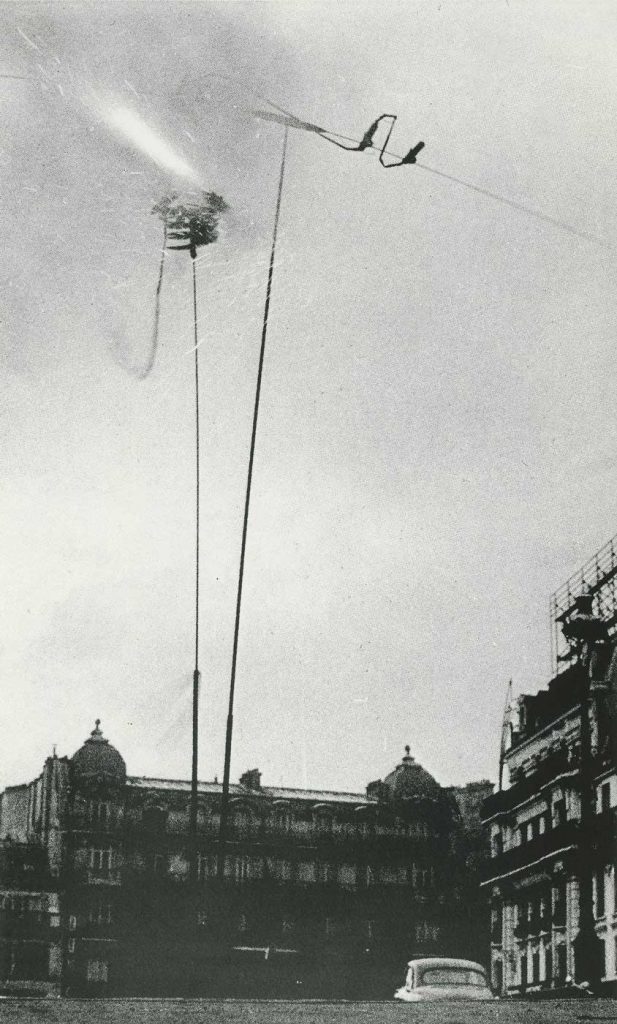
The Signaux are transformed into Signaux – Feux d’Artifice. He performs happenings on the streets and squares of Paris, but also at private homes such as Iris Clert’s. Takis’ happenings are considered to be the forerunners of Street Art performances.
January. He presents one of his Signaux at an international exhibition hosted by the Musée d’Art Moderne de Paris. Later in that month he participates in Iris Clert’s group exhibition at her gallery, entitled Maussion, Laubies, Mubin, Takis, Quentin.
The Signaux change shape, becoming more flexible and acquiring a sense of movement, seemingly vibrating. When they strike each other they also produce a beautiful sound.
May. He is mesmerized by airports and big radars.
January. He travels back to London where he starts working at ironmongery on Star St. He meets Greek writer Costas Taktsis, who was a guest at his friend’s, Minos, house.
February. Hanover Gallery hosts Takis’ first one-man show, titled Figures in Plaster and Iron.
He leaves for France. While waiting for the train to Paris at the Calais station, he observes the technological landscape of the railway station, and he is fascinated by this “jungle of iron”. So he comes up with the idea of his first works. Takis starts sketching his inspiration on the platform’s cement floor.
He returns to Paris. He stays at a hotel in the Montparnasse area, while working in the meantime as a blacksmith at Place des Ternes. Shortly after, he relocates to another hotel nearby, and also finds work at another ironmongery in Rue d’Odessa. There he begins to give shape to his first works, which he had already designed at the Calais platform, using forged iron as a main material. That’s the material, which will be the main element of his artistic career. He creates his first three works and calls them Signaux.
At the opening of a Calder exhibition at the Galerie Rive Droite, he meets Gérard Philipe and Giacometti, but also Calder himself. Around that time he also meets then young artists Yves Klein and Jean Tinguely.
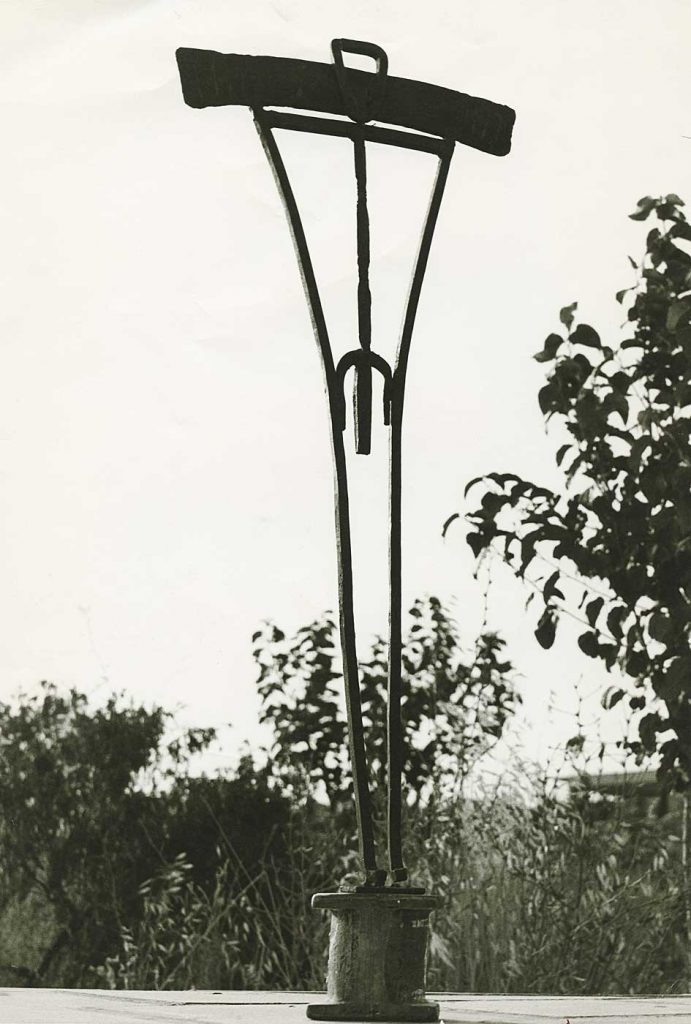
January. He arrives in Paris. He stays in the neighborhood of Convention. For a few months he joins the Brâncuși atelier.
He creates plaster statues with the intention to exhibit them at his friend Rhea’s gallery. The statues are not exhibited.
London’s Hannover Gallery holds a group exhibition in which Takis’ works are presented for the first time. At the exhibition’s opening, he is acquainted with English artist Sheila Fell, his future wife.
During a trip to Rome, more specifically on a visit to the Vatican Museum, he is impressed by Egyptian sculpture and thus begins discovering the Egyptian Civilization.
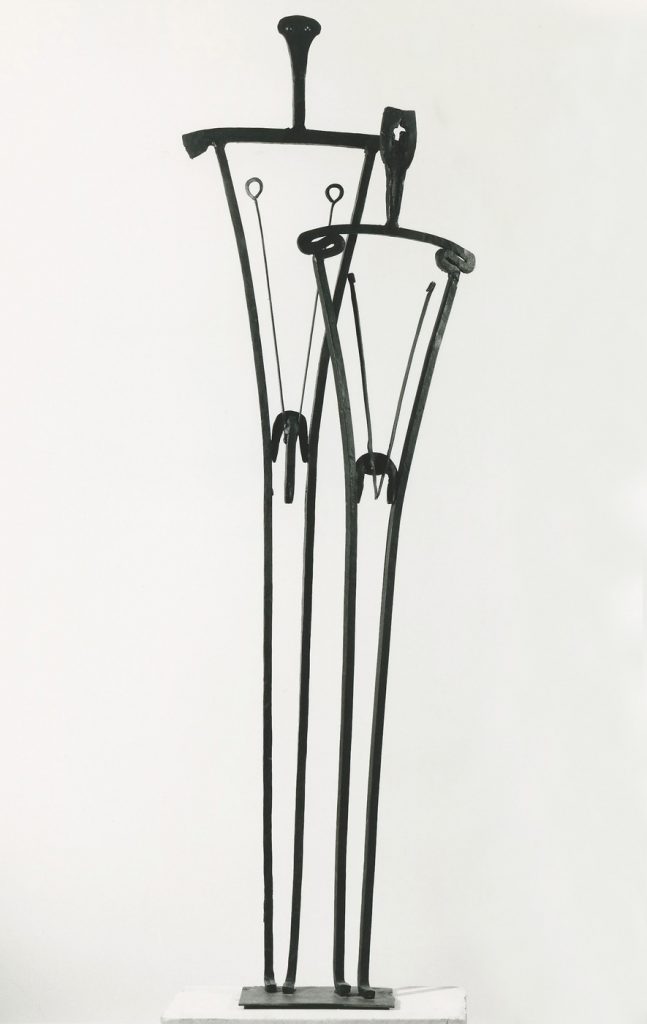
He returns to Paris. He then decides to return to Greece, and split his life between Athens and Paris. He learns to handle iron from a blacksmith in the then outskirts of Athens (Nea Philadelphia). He creates his first sculptures of forged iron, such as Oedipus and Antigone, the Sphinx and Eidolon, influenced by the sculptures of Giacometti and by figures associated with the Egyptian civilization, like the Sphinx.
March. He leaves for London again.
October. He meets Iris Clert, whom he encourages to open a gallery in Paris.
November. He returns to Paris.
He visits the island of Hydra, where he settles for a while and creates ceramics. It is there where he discovers the Gymnopédies, three piano compositions by French composer Éric Satie.
November. He works in the decoration department at the Athénée Palace hotel.
He decides to leave for Paris. “Greece is a prison”, he says and begins his journey to Paris on a boat.
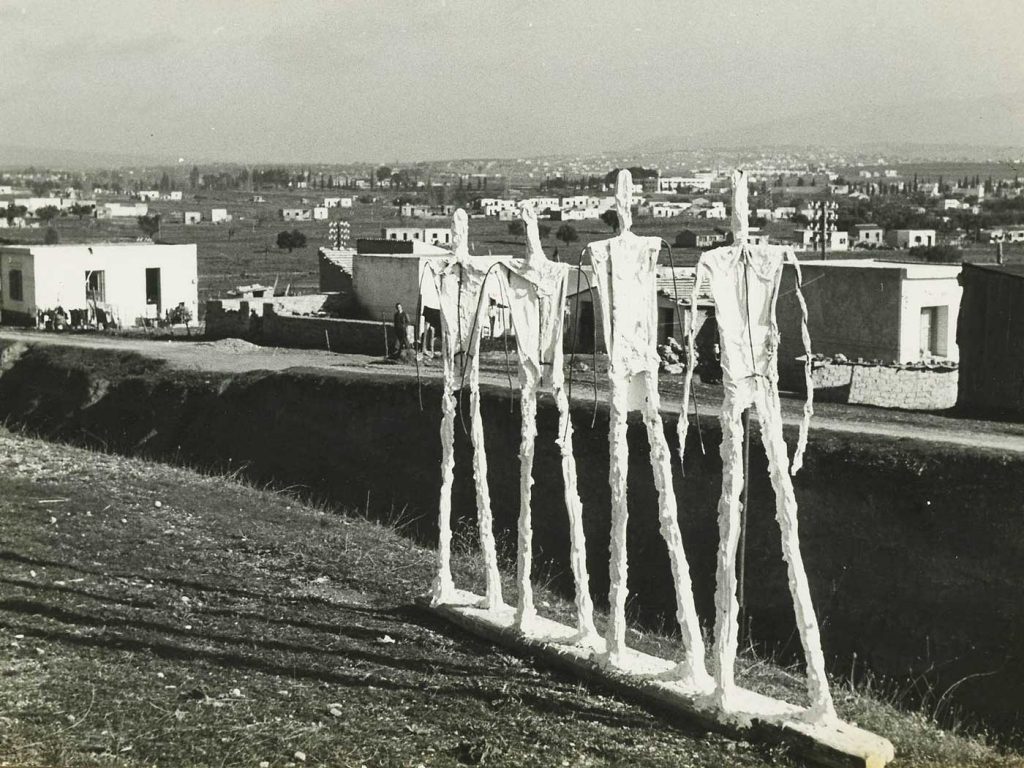
He creates Les Quatre Soldats, a plaster sculpture depicting four marching soldiers, whose arms are formed of iron bars.
He participates in the first “International Exhibition” in Delphi.
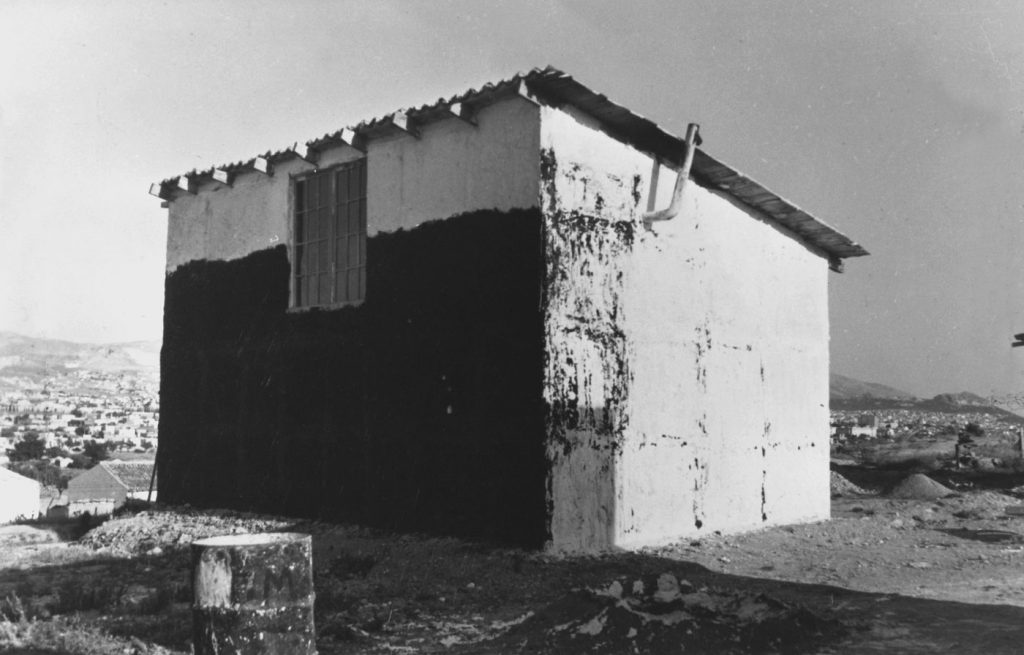
He stays at a Youth Center in Kolonos, at the prompt of the Center’s director himself.
He builds, illegally and with the help of friends Minos Argyrakis and Raymondos, a small home-atelier in Athens’ countryside, Anakassa.
He stays at a Youth Center in Kolonos, at the prompt of the Center’s director himself.
He is once again summoned to the army, where he undertakes the construction of the church for the soldiers, of which he himself sculpted the altarpiece.
Summer. He leaves Theoharis’s house.
He moves into his friend’s house, a Greek from Egypt, Theoharis.
The Greek Civil War is over.
He is summoned to the army, but he manages to get a two-year suspension.
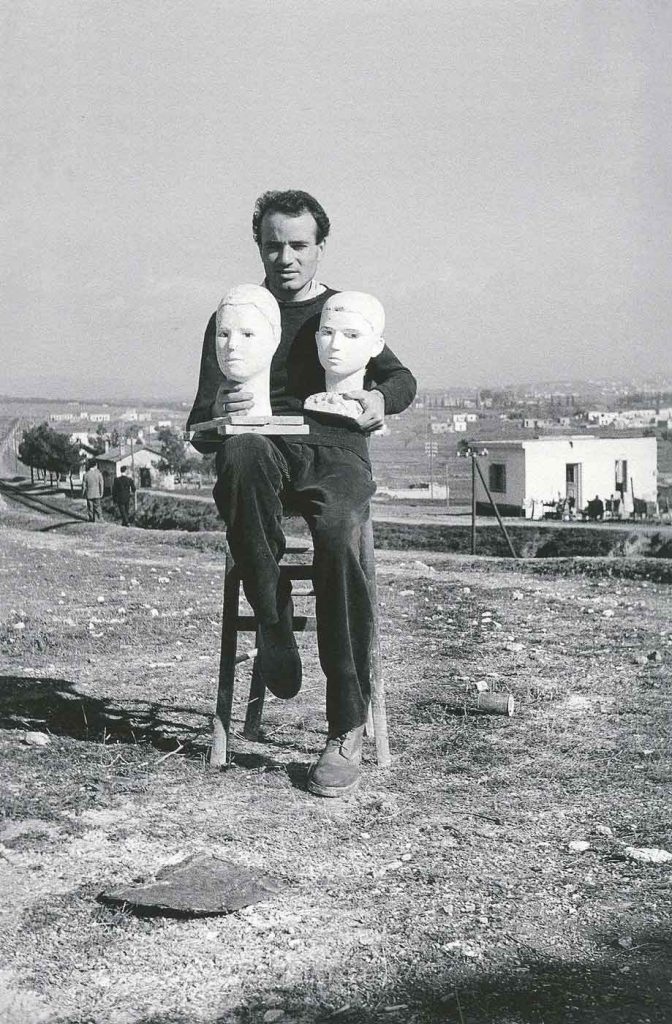
During his visits to the American Cultural Center in Athens, he discovers the works of Picasso and Giacometti. Inspired by these two artists, he creates his first plaster busts and clay sculptures in a basement atelier in Nea Halkidona, which he shares with his childhood friends Raymondos and Minos Argyrakis.
His father dies.
The Greek Civil War is being declared in Greece, Takis’ political involvement as leader of EPON results in a six-month prison sentence.
He takes over the restoration of a series of statues depicting heroes of the Revolution that were destroyed in 1944, which were initially located at Othon’s villa, but are now in the basements of the Cultural Center
He undertakes the duties of the leader of the local section of EPON (United Panhellenic Organization of Youth).
He works at the airport of Athens.
December. After perceiving the political tendencies of EDES, he decides to enlist into ELAS (National People’s Libearation Army) where he assumes spying duties with regard to EDES moves.
He becomes a member of EDES (National Republican Greek League).
Nikos, the eldest of his siblings, passes away.
The German Occupation begins.
His childhood in Athens coincides with the Metaxas dictatorship and the German Occupation of Greece.
October (29/10/1925). Panagiotis Vasilakis is born in Athens. He is the sixth of seven children in the family. His father Athanasios, of Peloponnesian descent, works as a realtor and his mother Alexandra is a descendant of a wealthy merchant family. The Asia Minor catastrophe will also be the cause of the economic disaster of the family, since the farms belonging to his father will be used by the state as places of concentration of the refugees arriving from Smyrna. The family also loses many of the houses they owned due to its financial predicament.

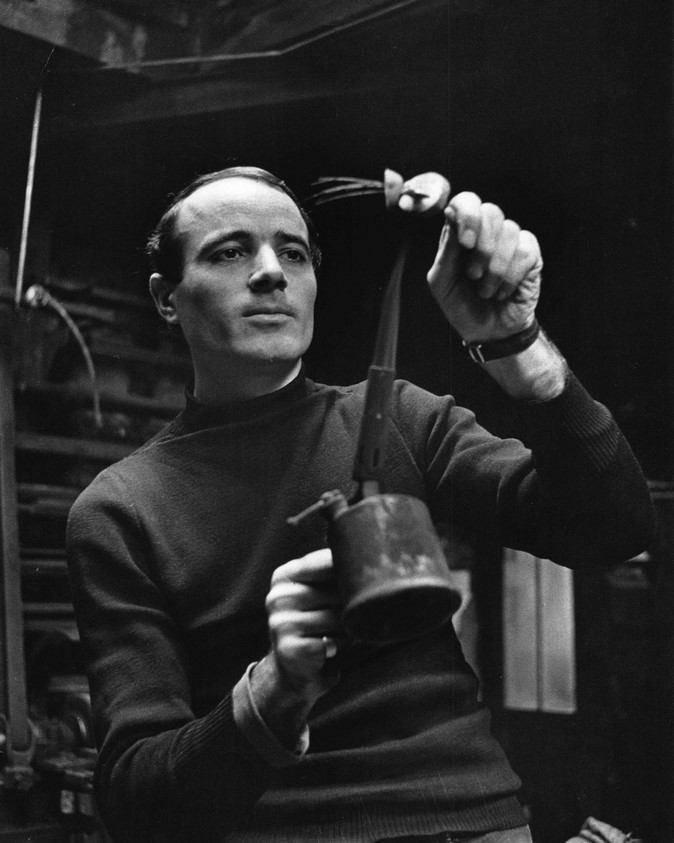
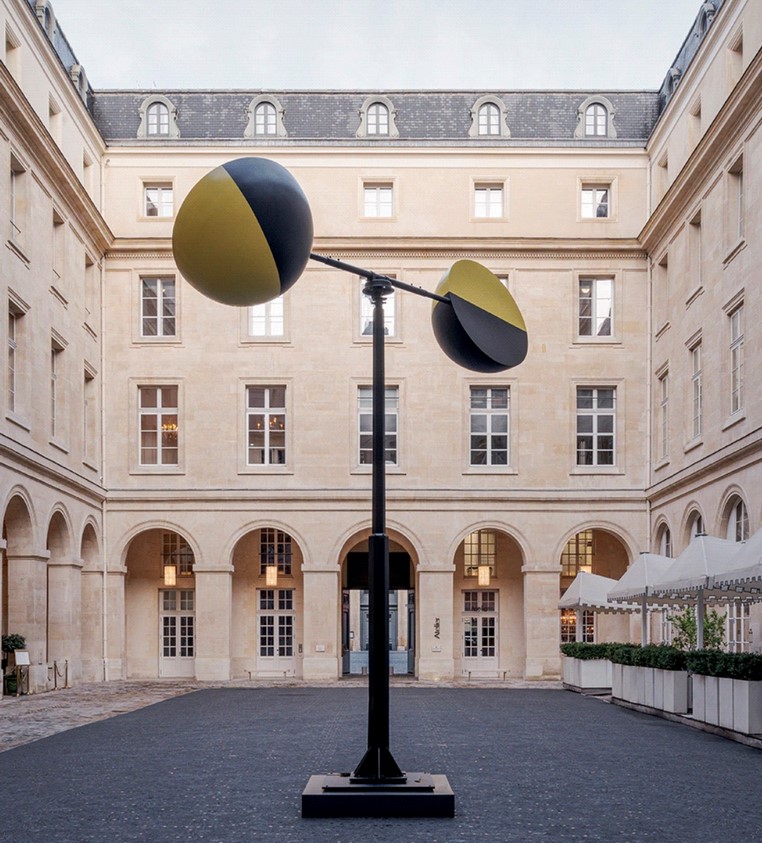
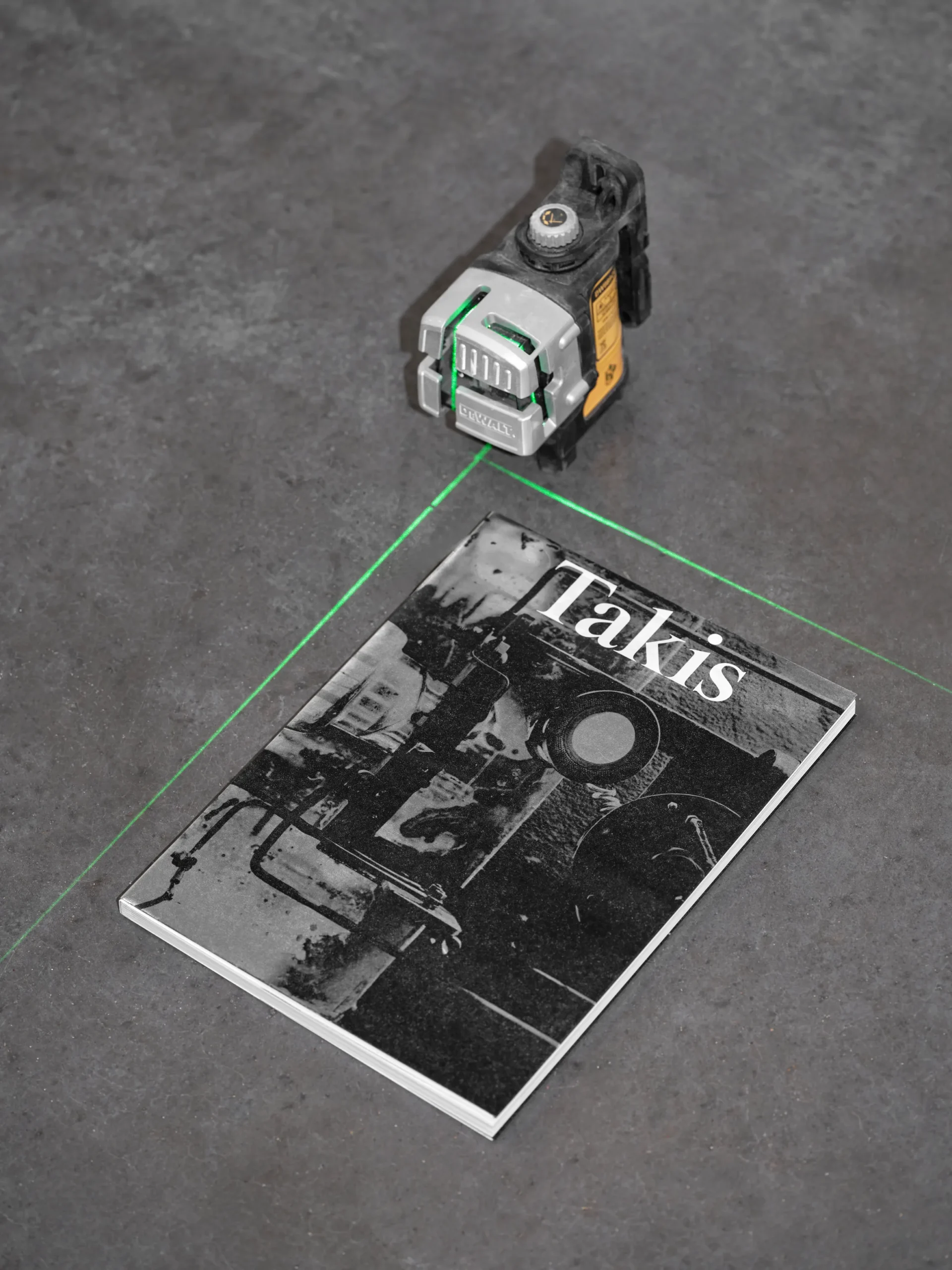
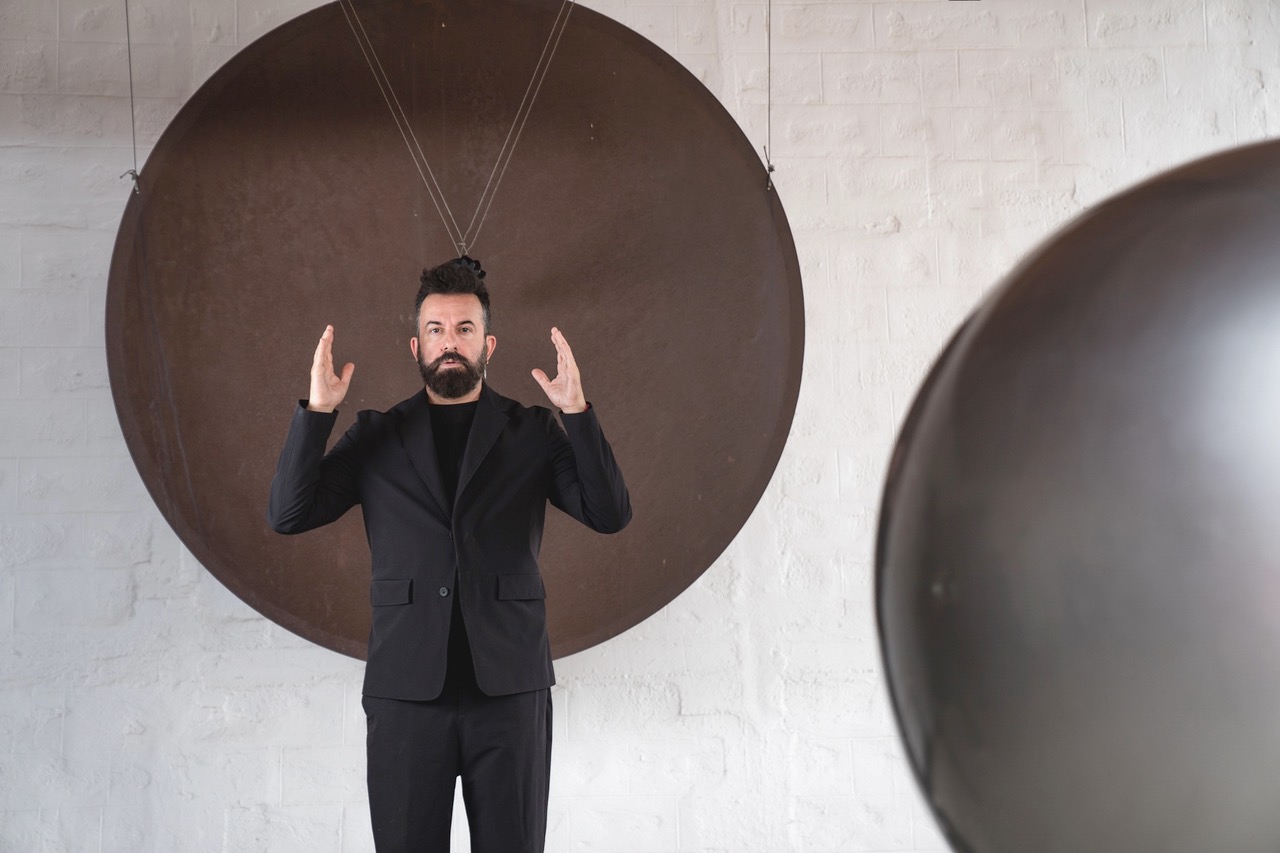 Copyright © Takis Foundation Research Center for the Art & the Sciences, 2023,
Copyright © Takis Foundation Research Center for the Art & the Sciences, 2023,